THE
LONG VIEW

LONG VIEW

KAREN DAVIDSON
For Rusty Smith, growing pears has been a lifelong endeavor -- 60 years and counting. The 82-year-old tree fruit grower is a legend in Ontario. Part of his legacy will be the Happi pear (HW624).
In spring 2024, he planted three acres of the HW624 pear at Blenheim, Ontario’s Manitree Fruit Farms. This was the fifth year of planting the new cultivar which matures 10 days later than a Bartlett, but with the familiar red-blushed skin.
“I first heard about this pear through Gene Penner at the Canadian Fruit Tree Nursery and Matt Ecker, vicepresident of sales at Vineland Growers’ Cooperative,” recalls Smith. “We have some open ground to plant new pears, but the first question was whether there is a market for them. There’s no point in growing them without a market.”
With assurances from Vineland Growers’ Cooperative, Smith proceeded with planting in rows 12 feet apart and five feet between trees on wire support so that lateral limbs can grow at the proper angle. The clay loam soil has proven to grow pears well.
“Harvest was shockingly light this fall,” reports Smith’s son-in-law Brian Rideout. “Mother Nature is a cruel jokester. This year, fruit size was down considerably due to drought and this affected volumes. We have seen yields in the past as high as 30 bins per acre.”
It’s considered to be a mid-season maturing pear. Normally, that would mean a harvest time of early September, but harvest 2025 started in late August.
The trees came from Canadian Fruit Tree Nursery, Jordan Station, Ontario. Gene Penner, a grower for the company, explains that the variety was bred by Agriculture and Agri-Food Canada (AAFC) and is

managed by Vineland Research and Innovation Centre (Vineland). Vineland has engaged Stemilt Growers LLC (Stemilt) and the Associated International Group of Nurseries (AIGN) who will contribute their expertise to commercializing the Happi pear around the world. Stemilt leads these efforts in North America. The variety’s resistance to fire blight and pear psylla are key characteristics that are attractive to growers.
According to the website of the Canadian Food Inspection Agency, ‘HW624’ arose from the controlled cross of ‘Harrow Sweet’ and ‘NY10353’ made in 1988 by Dr. D. M. Hunter at the AAFC Research Station in Harrow, Ontario.
Continued on page 3

Be vigilant for spotted lanternfly this fall. In September 2025, the Canadian Food Inspection Agency (CFIA) confirmed three live interceptions of spotted lanternfly. One was on Pelee Island, Ontario and two were in Saint Bernard-de-Lacolle, Québec.
Note that CFIA has not confirmed any established populations of spotted lanternfly in Canada. However, the agency continues to receive reports, directly and indirectly, of spotted lanternfly observations in various locations across Canada.
Look to the updated chart of sightings.
The definition of a sighting is as follows: Reports of spotted lanternfly in Canada that the CFIA is aware of, including those made on public reporting sites (for example, iNaturalist Canada, Facebook, etc.). CFIA has followed up on these, and could not confirm the report, as no spotted lanternfly specimen was found.
The definition of an interception is as follows: Live spotted lanternfly, confirmed by the CFIA, in contained situations (e.g. warehouse) with no evidence of release to the Canadian environment; and/or dead spotted lanternfly, confirmed by the CFIA.
Source: Canadian Food Inspection Agency October 3, 2025 posting.
KAREN DAVIDSON
It’s time to learn more about the geography and culture of Mexico because trade opportunities are looking sunny. Buenos diaz! – good morning –would be a good start.
Canada’s agriculture minister Heath MacDonald led a trade mission to Mexico City and
Guadalajara in mid-October 2025 that signalled tighter bilateral ties and more trade than in recent memory. Significantly, the Canadian delegation included Alberta agriculture and irrigation minister RJ Sigurdson, Saskatchewan agriculture minister Daryl Harrison, Manitoba agriculture minister Ron Kostyshyn and Ontario agriculture and agri-food minister Trevor Jones.
While a deal was signed for more Canadian beef to be delivered to 42 Costco stores in Mexico, horticulture was also on the agenda. Mexico has accepted Canada’s proposal to ease import requirements for eligible apples from eastern Canadian provinces starting in January 2026 and meaningful progress has been made on mutual laboratory and inspection recognition.
In attendance was Ron Lemaire, president, Canadian Produce Marketing Association (CPMA). He reports that the
Mexican consumer environment has changed in recent years with high-end retailers, a growing middle class and a similar response to the American administration as Canadians. Besides the apple news, he says that “business zones” or “safe zones” were discussed to motivate more trade between Canada and Mexico. It’s a diverse country with 31 states. At present, Mexico does not have a PACA-like trust but their representatives are investigating a model that would work for the entire North American continent.
Practical discussions touched on how improvements to ports in Mexico and Canada could help speed more trade. And as for trucking, questions were asked if bonds are required for trucks to move from Canada through the U.S. to Mexican destinations.
From Mexico City, the federal minister’s delegation travelled to Morelia for the annual TriNational Agricultural Accord meeting October 16-18, with representatives from Canada, Mexico, and the U.S. National Association of State Departments of Agriculture (NASDA.)
“We’re fortunate that at a state and provincial level all three countries are aligned in wanting a free-trade model,” says Lemaire. “The needs are the same whether it’s for controlling animal diseases or creating a trusted labour model.”
In advance of CUSMA talks in 2026, all three countries need to have a united front in pushing back on any potential for U.S. tariffs on produce.
“Even a 5 per cent tariff would have a dramatic impact to industry and consumers,” says Lemaire. “The free trade deal has been successful in stimulating economic growth for all countries. To that point, NASDA committed to letters from American states to be delivered to the federal administration early in 2026 calling for agriculture, including produce, to remain tariff-free.”
For Canada, the strategy is to maintain trilateral relationships while strengthening bilateral partnerships. There needs to be a clear line of sight so that businesses can feel confident in investing.
After 30 years in elected office, both municipally and provincially, Steve Peters resigned in mid-October as councillor of the city of St. Thomas, Ontario to spend more time focussing on agricultural issues. He is chair of the Ontario Greenhouse Vegetable Growers which represents 170 growers of more than 4,300 acres of greenhouse vegetables.
Best wishes to Jim Inksetter, vice president of sales and marketing Canada, Stokes Seeds, who is retiring after 22 years in the role effective November 1. His vast product knowledge combined with passion supported both his team and customers. He leaves behind a legacy of selecting the best varieties to suit customer needs.




Congratulations to Bridget Visser who is stepping into the role after eight years as territory manager for central/northern Ontario. Taking her place as a territory manager is John Hattingh

Congratulations to Rick and Connie Bradt who have retired from AMA Horticulture, long-time supporters and innovators in the horticultural industry. Teris, headquartered east of Québec City, has bought the company. Marc-Émile Corbiel is the new general manager.


The Grower is the proud recipient of global and Canadian awards in the last month. The International Federation of Agricultural Journalists announced its 2025 awards at its annual congress in Nairobi, Kenya. Editor Karen Davidson won runner-up honours in the Innovation Category for the August 2024 cover story: “Artificial intelligence eyes auto-labour.” The same story was recognized by the Canadian Farm Writers’ Federation (CFWF) with a silver award in Technical Reporting. She was also awarded a silver in CFWF Current Affairs Reporting for “Building community in a global village improves retention rates.” (June 2024 cover story). Freelance photographer Glenn Lowson won a silver prize in the Production Photography category for capturing asparagus grower Mike Chromczak preparing to spray.

Its unique shape and ability to develop a red cheek will make it really attractive on shelf and once you bite into it, the flavour is very sweet with a zesty bite.
~ MATT ECKER, VINELAND GROWERS’ COOPERATIVE



Continued from page 1
It was selected as a hybrid seedling in 1995 and propagated by budding on pear seedling rootstocks. Trees were planted in an evaluation orchard at the AAFC Research Farm at Jordan Station, Ontario in 1999. This selection was advanced by Dr. Hunter and made available for testing, as ‘HW624’, in regional trials in cooperation with the Ontario Fruit Testing Association beginning in 2000.
Commercialization is a long, tedious process that is often triggered by a sudden need in the industry. That’s what happened in the early 2000s with the collapse of the pear canning industry in southern Ontario. As Matt Ecker recalls, “A lot of growers pulled out their pear
trees at that time. But then there was incentive to find a freshmarket pear that would store well and extend the local season throughout the winter.”
Ecker continues, “Its unique shape and ability to develop a red cheek will make it really attractive on shelf and once you bite into it, the flavour is very sweet with a zesty bite. Something I know customers will come back for.”
As the timeline inched forward, AAFC contracted Vineland in 2013 to manage evaluation and commercialization of its tree fruit portfolio.
“This variety transitioned from the on-farm selection process to our consumer branding and marketplace testing analysis and was quickly identified as a desirable pear choice by consumers and
growers,” says Dr. Ian Potter, president and CEO at Vineland. “Finding the right collaborator was the next step in the commercialization pathway to bring HW624 from our farm to consumer tables.”
As the global production and marketing manager, Stemilt Growers, a Washington State-based company, will also lead the release of the variety in Canada. They are owned and operated by the Mathison family, a well-known grower, packer and shipper of tree fruit.
“We’re excited to be part of innovation in the pear category with the fantastic HW624 cultivar,” says West Mathison, president at Stemilt. “The Vineland team selected a pear with characteristics that make it grower and consumer-friendly so this will be a great benefit to
Canadian growers. It has the qualities that will delight existing and new pear shoppers throughout the country.”
“Ontario-grown pears will never be available 12 months of the year like apples,” says Ecker. “But working with the right variety and the right storage makes for a stable industry.”
In anticipation of many acres of the Happi pear to be grown in Ontario, the Vineland Growers’ Cooperative is doubling the size of its controlled atmosphere storage capacity in Virgil. Shovels should be in the ground as of November, 2025.
As Rusty Smith and other tree fruit growers can attest, commercialization is not a linear path.
The Grower is “Digging Deeper” with Matt Ecker, vice-president sales, Vineland Growers’ Cooperative, Jordan Station, Ontario. He forecasts a pear revival with the Happi pear variety, thanks to resistance to fire blight resistance and pear psylla but also storability. This podcast is sponsored by Cohort Wholesale.

Recent and repetitive complaints of misrepresentation of imported apples as Canadiangrown has pushed the British Columbia Fruit Growers’ Association (BCFGA) to complain to the Canadian Food Inspection Agency (CFIA).
The BCFGA represents the interests of tree fruit growers, including apple producers across the Okanagan, Similkameen and Kootenay regions.
“We are writing to formally report ongoing and repeated violations of federal labeling requirements in BC retail outlets, specifically concerning the misrepresentation of imported apples as Canadian-grown,” writes Adrian Aarts, executive director, BCFGA, in a letter released in the association’s weekly newsletter on September 26, 2025.
“Over the past two weeks, our organization has received multiple complaints from growers and consumers about inaccurate country-of-origin labeling in stores. These complaints have been accompanied by photographs, which we have
verified through direct in-person visits. In numerous instances, we observed imported apples from Washington State, New Zealand and Chile being labeled as “BC” or “Canada” product.
The mislabeling typically occurs in the following way:
• The primary signage above end-cap displays features “BC” prominently, suggesting local product.
• Secondary labels often read “Imported/Canada-BC,” a contradictory and misleading designation.
• PLU stickers on individual apples clearly identify Washington State, New Zealand or Chile packing houses as the source of the fruit.
This practice has been repeatedly documented over the past three years. The BCFGA has previously notified CFIA of these violations, but the problem persists. Despite past reports, Save-On-Foods and Superstore continue to market imported apples in a manner that misleads consumers into believing they are purchasing BC-grown fruit.
This misrepresentation has
serious consequences:
• Consumer trust: Shoppers who want to support local farmers are being misled at the point of sale. This undermines public confidence in both labeling laws and the integrity of the food system.
• Market fairness: BC growers face higher costs of production compared to Washington State, and they rely on accurate country-of-origin labeling to compete fairly. Mislabeling erodes the economic viability of local farms.
• Reputation of Canadian agriculture: Repeated, uncorrected violations damage the credibility of Canada’s regulatory system in the eyes of both producers and the public.
The CFIA has a clear mandate to enforce the Safe Food for Canadians Regulations, which require truthful and nonmisleading labeling. Allowing continued violations creates a precedent that rewards retailers who flout these rules while penalizing those who comply.
The BCFGA requests the CFIA to:

1. Conduct immediate inspections of Save-On-Foods and Superstore locations across BC to verify the mislabeling of imported apples as local product.
2. Require corrective action to ensure that all imported apples are labeled accurately, and that signage does not mislead consumers into believing they are purchasing BC-grown fruit.
3. Issue penalties or sanctions where repeated or willful non-compliance is established.
4. Report back to industry
stakeholders on the enforcement steps taken and the timelines for resolution.
The BCFGA urges the CFIA to prioritize enforcement. Without strong action, continued mislabeling will further erode trust in the system and jeopardize the livelihoods of BC apple growers who are already under significant financial strain.
Source: BC Fruit Growers’ Association September 26, 2025 newsletter
Summerland Varieties Corporation which manages cherry varieties developed by Agriculture and Agri-Food Canada reports that two of three lawsuits have been resolved regarding Staccato cherry trees.
On September 10 and 15, 2025, the District Court for the Eastern District of Washington issued orders dismissing all claims and counterclaims between Agriculture and Agri-Food Canada (“AAFC”), Summerland
Varieties Corp. (“SVC”), Van Well Nursery, Inc. (“Van Well Nursery”) and Gordon and Sally Goodwin (the “Goodwins”). Claims and counterclaims between AAFC and Monson Fruit Company (“Monson Fruit”)

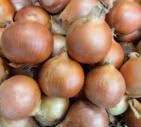
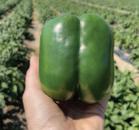

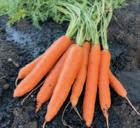
continue to be unresolved.
The world-renowned and commercially successful lateseason Staccato cherry originated in AAFC’s prolific tree fruit development program. AAFC provided Staccato plant material to Van Well Nursery under a testing agreement which stipulated that the plant material could not be propagated or distributed to any third party for any purpose.
Van Well Nursery later sold the Goodwins what were supposed to be 200 Sonata cherry trees. In reality, one of those trees was a Staccato tree that Van Well Nursery was prohibited from distributing. After noticing that the tree was different and its cherries ripened later, the Goodwins and Van Well Nursery proceeded to seek and obtain a plant patent on what Gordon Goodwin called the “Glory” tree. All “Glory” trees can be traced back to that original, improperly obtained tree. The Goodwins and Van Well Nursery distributed “Glory” plant material and trees to Monson Fruit, which continues to grow, pack and sell “Glory” cherries.
In 2020, based on everimproving scientific evidence that the two cherries were the same, AAFC filed a lawsuit against Van Well Nursery, the Goodwins, and Monson Fruit. AAFC made legal claims, including plant patent infringement, conversion of trees and plant material belonging to AAFC, interference with AAFC’s economic relations, unfair
competition, and various violations of the Lanham Act. In 2024, the lawsuit was bifurcated and a bench trial was held to determine the threshold issue of whether the “Glory” cherry is actually the Staccato cherry. In August of 2024, the Court found that “Glory” is Staccato® and the so-called “Glory” mother tree that the Goodwins received from Van Well Nursery was a Staccato tree.
In summer 2025, Van Well Nursery and the Goodwins each reached settlement with AAFC. Settlement terms included a monetary payment to AAFC, assignment of the Glory patent to AAFC, and the destruction of all “Glory” (Staccato) trees in Van Well Nursery’s and the Goodwin’s possession.
As the holder of the global master license for Staccato cherries, SVC general manager, Sean Beirnes, said, “While the litigation against Monson Fruit continues, I am gratified that Van Well Nursery and the Goodwins have resolved this matter to AAFC’s satisfaction and in a way that acknowledges AAFC’s rights to Staccato trees and Staccato cherries”.
Summerland Varieties Corp. (“SVC”) manages intellectual property rights on behalf of fruit breeders and rights owners of world-renowned cherries, apples and berries.
Source: Summerland Varieties Corporation Oct 6, 2025 news release
KAREN DAVIDSON
Wild blueberry farmers in the Maritimes are feeling as blue as their berries. A droughty summer shrivelled the crop. In New Brunswick where 25 per cent of the Canadian crop is grown, annual yields were down from 68 million pounds to an estimate of 20 to 24 million pounds.
“I have so much respect for the farmers who put a lot of inputs into the crop early in the season,” says Donald Arsenault, general manager, NB Blueberries. “But after two previous years of losses, some tough decisions will have to be made going into next year.”
Representing 175 farmers and a crop that has annual farmgate value of $81million, Arsenault fears that some farmers may be forced out of business. Most of the “farmed” land is on Crown land, a fact that put New Brunswick farmers at more risk when the provincial government declared a fire ban on August 10, 2025 without consulting the sector.
The wild blueberry harvest was halted for at least a week, before entreaties to the ministry of agriculture resulted in rule changes with some limitations. Growers with no knowledge of the ban paid a total of $25,000 in fines.
Going forward, Arsenault says that meetings are planned with the New Brunswick ministry of natural resources to debrief on the importance of the wild blueberry industry to rural communities. And meetings will be held with the agriculture minister about the potential for financial compensation. So few farmers subscribe to the federal AgriStability suite of programs, that little faith is placed in the prospect of a payout from the AgriRecovery program.
“Consumers love farmers, but don’t see them as business people taking huge risks,” says Arsenault. “Climate change presents a huge risk and we’re likely to have more droughts in the future.”
In Canada, lowbush blueberries are the second most valuable fruit export, valued at $313 million after highbush berries at $382 million. (Statistics Canada, 2024).
Besides New Brunswick, other provinces are suffering. In Nova Scotia, wild blueberries represent the province’s most valuable export crop generating $121 million in annual exports, several times more than apples with $31 million in farmgate revenue.
Janette McDonald, executive director of the Nova Scotia Wild Blueberry Producers Association, says yields were reduced by 55 per cent to about 20 million pounds. She is worried that
because wild blueberries are biennial, that the sprout fields will experience damage going into next year.
Reports indicate that Prince Edward Island Wild Blueberry Growers also suffered production declines.
In 2023, Québec accounted for 42 per cent of Canada’s wild blueberry production, followed by New Brunswick at 25 per cent, Nova Scotia at 21 per cent and Prince Edward Island at 11 per cent, according to federal data.


ISABELLA NARDONE
Mirids, members of the insect family Miridae, are increasingly recognized for their role in integrated pest management (IPM). Many species are generalist predators, feeding on both crop pests and plant tissue, a behaviour known as omnivory. This dual feeding strategy allows mirids to establish well in greenhouse environments, but it also introduces complexity: not all mirids are equally beneficial.
In North American tomato greenhouses, the native species Dicyphus hesperus has proven to be an effective biological control agent, particularly against whiteflies and other soft-bodied pests. Its ability to survive on both prey and plant material makes it resilient in commercial settings. To enhance its establishment, growers often introduce mullein plants (Verbascum thapsus) as banker plants, which provide habitat and alternative food sources. Furthermore, other native Dicyphus species may also have biological control potential which we are currently exploring.
However, the recent emergence of Nesidiocoris tenuis, a non-native mirid species, has raised concerns. While N. tenuis also preys on pests, its aggressive plant-feeding behaviour, especially on tomato stems, can cause significant crop damage. Symptoms include girdling and necrotic rings, which compromise plant health and yield. This has led to questions about whether its presence in Ontario greenhouses is doing more harm than good.
Complicating matters further, N. tenuis is now appearing in facilities that also employ D. hesperus, and little is known about how these species interact. My research focuses on understanding whether these species
can interfere with one another, as it can influence biocontrol agent establishment, species coexistence, spatial distribution, and ultimately, the success of biocontrol programs.
To investigate these dynamics, I first conducted small scale Petri dish trials to determine whether adults of different predatory mirid species will prey on the immature predators of other species (intraguild prey) within a 24-hour period. I next scaled up to greenhouse cage trials to look at single and combined predator distribution and establishment rate on either tomato alone or a combination of tomato and mullein.
This allowed me to evaluate plant preference and spatial displacement between species including for N. tenuis with D. hesperus, and N. tenuis with D. famelicus. Adults were left in cages for two weeks to mate and oviposit before being removed. Each individual was recorded by species, plant type (tomato or mullein), and location on the tomato plant (top, middle, or bottom).
Currently, I am analyzing plant material from greenhouse trials to assess how presence of two predator species together influences oviposition behavior and spatial distribution. Early observations suggest that this may lead to displacement or competitive exclusion, which could affect the long-term viability of native mirids in shared environments.
For growers, the implications are significant. If N. tenuis undermines the effectiveness of native agents such as D. hesperus, it may require changes in pest management strategies, including species selection, banker plant use and monitoring protocols. By characterizing these interactions, my goal is to provide actionable

Pictured in one of two greenhouse compartments at the HRDC, Isabella Nardone stands in front of her displacements and plant preference cages set up pre-mirid introduction in a randomized block design.
insights that help greenhouse operators maintain ecological balance and optimize pest control.
Understanding what’s happening in our greenhouses is the first step toward managing threats. With continued research, we can develop more targeted, sustainable approaches to combat emerging threats such as N. tenuis while preserving the benefits of native mirid species.
This research is a part of the project: SCAP-ASC-17 Horticulture Cluster Activity 9ADeveloping a system’s approach to pest management on greenhouse vegetable crops: mirid predator selection project funded by the Fruit and Vegetable Growers of Canada in collaboration with Biobest.
KAREN DAVIDSON
The University of Windsor has opened the eyes of Isabella Nardone to the world of entomology, the study of insects more often than not, invisible, unless under a microscope. She completed her honours Bachelor of Science in integrative biology in 2024 with a Certificate in Biological Conservation. She is currently in her second year of a Masters of Science degree.
“I wasn’t exposed to entomology until my final year of my undergrad when I took an entomology course, where I had to create an insect collection,” says Nardone. “This collection is what sparked my interest, as it was eye-opening to the biodiversity and how beautiful insects can be. My work is now a combination of my ecological interests tied in with insects.”
While growing up in the Windsor-Essex County region, she never realized the agricultural advances in greenhouses or their economic impact until she visited her first commercial greenhouse.
“Seeing the scale and density of production here gave me a sense of how necessary my work is in an ever-evolving field,” says Nardone.
Now stationed at Agriculture and Agri-Food Canada’s Harrow Research and Development Centre, she’s under co- supervision by Dr. Roselyne Labbé and Dr. Sherah VanLaerhoven. She’s open to a future career at either teachers’ college, in industry or in academia.
Pure Flavor has launched Cherry Picked, an exclusive medley of three signature tomato varieties: Azuca, Tiki Tomatoes, and OMG Tomatoes. Cherry Picked was developed to fill a specific gap in the marketplace for a medley pack that is consistent every time.
“While medley tomatoes continue to be a large segment within snacking tomatoes, we’ve seen medley sales in the industry struggle over recent years,” says Matt Mastronardi, executive vice president for Pure Flavor. “We believe this is because medley packs have been treated as a supply outlet, with inconsistent varieties, quality and flavour being put into these packs. The
result is an inconsistent experience for consumers, which has them turning to other more reliable options, or worse, leaving the category altogether.”
Cherry Picked stands apart as a carefully curated medley of three hand-selected tomato varieties, chosen for their complementary flavour, texture, and visual appeal. Unlike many other packs, which mix tomatoes without intention, Cherry Picked demonstrates a true commitment to quality, ensuring that every pack offers the same varieties consistently, and that every tomato is picked at peak ripeness to deliver the best flavours and a consistently premium experience.
Azuca Red Cherry Tomatoes
burst with juicy, garden-fresh flavour, making them perfect for snacking or salads. Tiki Tomatoes are tropically sweet with a striking cosmic-inspired appearance, ideal for creating visually exciting platters, enhancing appetizers, or adding a bold twist to everyday dishes. OMG Tomatoes offer a golden blush and a citrusy crunch, bringing unique texture and bright flavour that complements salads, gourmet recipes or entertaining spreads.
With the same three stand-out varieties mixed together in every pack, Cherry Picked also offers consumers a lower-risk format to try new flavours and find new favourites.
“This medley provides retailers

with a product that elevates the produce category and meets the expectations of today’s shoppers,” said Mastronardi.
Source: Pure Flavor October 15, 2025 news release
Haven Greens, Canada’s first fully automated greenhouse, located in King City, Ontario, is introducing Trillium Blend, a Costco-exclusive product.
Named after Ontario’s official flower, the blend represents freshness, strength, and local pride. A medley of baby green leaf, baby red butter leaf, arugula, and mustard greens, the new product offers consumers a signature Ontario blend they can recognize and trust — grown locally, with care, for consistent taste and quality.
Like all their leafy greens, Trillium Blend is grown locally in the Greater Toronto Area within Haven Greens’ five-acre greenhouse—a touchless, climatecontrolled, and pesticide-free facility. This careful handling ensures that every pack
maintains the unparalleled quality and freshness. Currently on track to reach net-zero operations by 2027, the state-ofthe-art greenhouse reflects Haven Greens’ commitment to innovation and providing an optimal consumer experience. Its unique growing approach means that its greens are ready-to-eat without washing and have an extended shelf life of up to five weeks, far exceeding the two-week shelf life of field grown options.
Haven Greens officially launched earlier in 2025, with its first harvest taking place in March 2025. Since then, the brand has grown significantly and expanded to retailers across the province and beyond. This new Costco partnership illustrates Haven Greens’ continued
commitment to making its high-quality leafy greens widely accessible.
“Producing an exclusive new blend for Costco, a retailer so widely beloved in our home province and beyond, within our initial launch year has been an honour,” said Jay Willmot, CEO and founder of Haven Greens. “Costco’s commitment to consistently providing Canadians with quality products aligns closely with our goal of providing a fresh, sustainable, and readily available alternative to seasonal field lettuce.”
The facility currently produces approximately 10,000 pounds of lettuce per day, totaling 3.6 million pounds annually. Its indoor, climate-controlled, and fully automated growing conditions
CKF, Inc., a leader in moulded fiber packaging solutions, has launched Etched Earthcycle. This advancement eliminates the need for labels and adhesives by etching branding, logos, and mandatory pack information directly onto the fiber surface. The result is a fully fiber-based solution that is renewable, widely recyclable, home compostable and circular by design.
“Etched Earthcycle reflects our ongoing commitment to packaging innovation that helps growers and retailers achieve their sustainability goals while enhancing consumer appeal,” said Shannon Boase,
senior director, New Market Development.
“This is the next step in our Earthcycle journey, which began a decade ago when we pioneered the first top-sealable moulded fiber punnet.”
Introduced in 2025 in partnership with leading grocery retailers and produce suppliers, Etched Earthcycle was created to reduce packaging waste while offering a natural, sustainable canvas for brand storytelling. By integrating product details directly into the moulded fiber, the innovation simplifies recycling, reduces cost and complexity and elevates shelf presence.
Leona Neill, director of marketing and packaging at Red Sun Farms, commented:
“We’re excited about the possibilities the etched Earthcycle design will bring—an elegant, straightforward solution that reduces packaging waste while reinforcing our sustainability commitment. Consumers will immediately recognize its distinct look, creating strong impact on the shelf.”
Etched Earthcycle is currently available in the same range of punnet and tray formats as CKF’s existing Earthcycle line, with sizes suitable for berries, grapes, stone fruit, tomatoes and more. It is particularly well-suited for high value produce
Windset Farms is incorporating more advanced climate systems, next-generation LED lighting and renewable energy solutions into its current expansion at Delta, British Columbia.
The new build adds 38 acres of “ultra-lit” production bringing the company’s total lit cultivation
area to 85 acres plus 45 acres of conventional, non-lit, greenhouse production. Following the completion of this next phase in summer of 2026, the company has further plans to add an additional 38 acres of lit production in 2027. This will bring the total acreage at its Delta site to 168 acres. Supported by an
extensive partner grower base in Mexico and British Columbia and a 168-acre greenhouse facility in Santa Maria, California, the company is positioned to supply its customers with fulfillment, reliability, and freshness.
Construction in Delta is underway, with the first planting

categories where branding and regulatory labeling requirements are critical.
Traditional Earthcycle packaging has long provided growers and retailers with sustainable moulded fiber options compatible with labels and top-seal automation. Etched Earthcycle takes the innovation further by embedding branding and regulatory information directly into the packaging itself—removing the need for any additional components, without compromising protection or performance.
Source: CKF Inc. September 30, 2025 news release
scheduled for late summer 2026.
Photo right: L-R: John Newell, Steven Newell
Source: Windset Farms October 15, 2025 news release
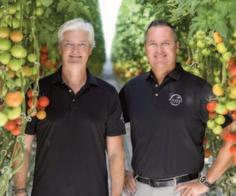

KAREN DAVIDSON
Ontario’s greenhouse strawberry sector bolted from zero to 600 acres in the last decade, only to retract to 180 acres in the last year. Why? Inexperience in growing a new crop.
Veteran greenhouse growers of tomatoes, peppers and cucumbers attest to the uphill climb in learning how to grow strawberries. Some reaped sub-par yields and realized that everbearing/day neutral varieties were totally different to grow compared to June-bearing, short-day varieties. Topping off those challenges were pathogens such as anthracnose and Neopestalotiopsis (Neo-P), an aggressive fungal disease that causes leaf spots, fruit rot and crown rot in strawberries. First considered a menace under only field
conditions, the disease has now been confirmed under greenhouse cultivation.
Against this backdrop, Matt Korpan, executive director, Biophi, addressed the 2025 Canadian Greenhouse Conference held in early October. For several years now, he’s led a horticultural innovation hub in Leamington, Ontario to support growers on current challenges and future opportunities. Their laboratory prowess includes genetics and pathogen testing: PCR, qPCR, DNA, RNA sequencing.
Tissue culture services are offered as well as expertise in food safety and nutrition. The team is experienced in vine crops, soft fruit, leafy greens and in crops transitioning from field to greenhouse.
Part of the hub’s research is to experiment with UV-C light. UV is short wavelength light in the 100-400 nanometre (nm) range. UV-C is 200-
The Canadian Greenhouse Conference has published the winners of the 2025 poster competition. They are:
1st place – Jonah Schaller, University of Guelph
2nd place – Azimove Sulthana, University of Windsor
3rd place – Avery Johnson, University of Guelph
4th place – Andrew Burns, University of Guelph
280nm wavelength. It’s used to kill virus, bacteria, fungus by penetrating and damaging the DNA/RNA inhibiting the cell’s ability to repair or reproduce.
Under the supervision of grower Noah Weber, Biophi has worked for three years on summer planting and winter production of greenhouse strawberries under dynamic lighting provided by Sollum Technologies. The main varieties of strawberries under study are Albion, Florice and Karima.
To test the efficacy of UV-C light, Biophi has used a Bogaerts Qii-Drive Shift in a fixed gutter strawberry trial. It’s used three times per week after the lights are off. The “set and forget” feature is useful because it automatically shifts between rows. The light is of variable intensity of 27J/m2 to 180J/m2.
Korpan explains that UV-C was used
with other treatment methods on an infrequent basis. These were hydrogen peroxide, potassium bicarbonate and biofungicides such as Rhapsody, needed for under canopy areas not accessible to UV light.
Analysis is underway on the impact on pests and biologicals. But it appears that blue light does have influence on mildew growth. Another question is whether the wavelength should be tweaked from 260 nm to 222 nm.
It’s early days for these experiments, but Korpan suggests that there could be other uses for UV-C in cucumbers or perhaps lettuce.
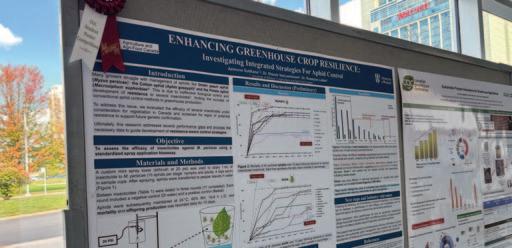
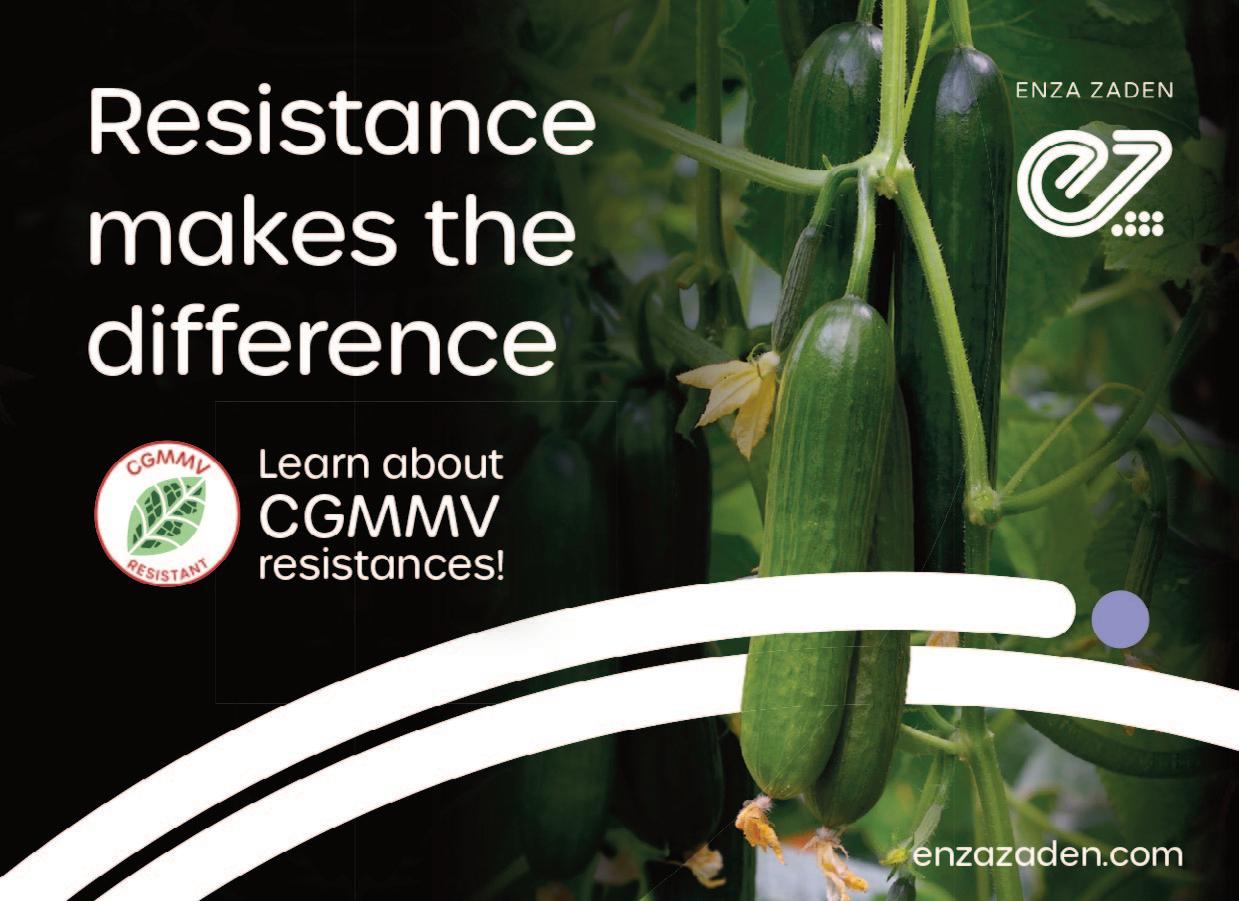
KAREN DAVIDSON
Advanced dynamic LED lighting has come a long way in high-wire crops. Sam Soltaninejad, chief horticulture specialist for Sollum Technologies, explained how in his presentation at the Canadian Greenhouse Conference in Niagara Falls, Ontario.
As the greenhouse sector has evolved over the last 10 years, growers have moved away from high-pressure sodium (HPS) lighting because of its constraints. Fixed spectrum LEDs became commercially viable about 2010. Sollum Technologies, founded in 2015 in Montreal, forecasted that this trend would be a game-changer for greenhouses. The company has tailored full-spectrum dynamic horticulture LEDs to optimize crop growth and quality.
Understanding the light spectrum and its effects on plants is key. UV light stimulates production of antioxidants and is increasingly used to suppress fungal pathogens. Blue light produces compact plants with thicker leaves and stems. It also stimulates the product of antioxidants and is useful for colouration of red-leafed crops. Yellow or green lighting penetrate deeper in the canopy, and stimulate the shade avoidance response. Red lighting is a major driver of photosynthesis and biomass accumulation. Far-red is powerful for controlling stem elongation and flowering. It affects flowering response of
daylight-length sensitive crops such as lettuce.
“Traditional lighting locks you in,” said Soltaninejad. “Growers need room to maneuver. Fixed lighting doesn’t respond to crop needs or environmental changes. And this leads to suboptimal growth and energy waste.”
Advanced dynamic LED lighting has a real-time spectrum and daily light integral (DLI) that adapts to your crop. These are programmable full-spectrum LED systems that adjust in real time to crop type, growth stage and environmental conditions. The system uses artificial intelligence and sensors to optimize light density and delivery.
“Growers gain yield protection, energy control and crop agility,” said Soltaninejad, adding that growers have the flexibility to switch crops quickly.
Sollum has partnered with Delphy in the Netherlands to prove results in its research greenhouse with both cucumbers and peppers.
“For Dutch pepper growers, matching Spain on cost meant rethinking light,” said Soltaninejad. “LED lighting helps with nutrient uptake and allows for an irrigation strategy. This was a new strategy for peppers.”
The lighting experts “designed the day” using ramp, dim and far-red to steer morphology. That meant a photosynthetic photon flux density (PPFD) of 250-270 umol/m2/s, a 16-hour photoperiod, advanced dynamic lighting and using
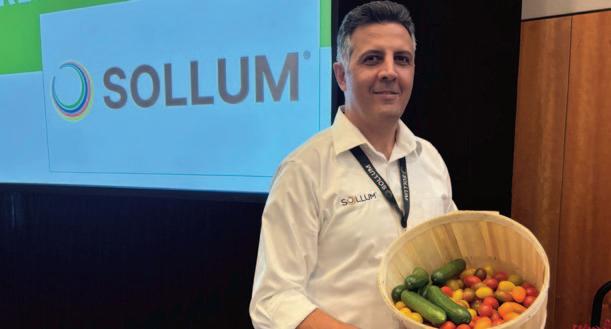
commercial varieties: Guintoli (Rijk Zwaan) and Sitrunate (Enza Zaden). In the research trial, the crop was planted in week 40, harvest started at week 49 and harvest was finalized in week 35.
The impact was most noticeable on internodes’ length management, with class one yield and average fruit weight of 190 grams.
With high-wire English cucumbers, the challenge is to achieve balance with far-red lighting. The PPDF was 250-270 um/m2/s. The researchers used the BASF/Nunhems varieties of Hi Lumier and Uptrace. They planted in week 45, started harvesting in week 49 and finished harvest in week 9. Key to this experiment
was supplemental morning light, specifically 100 per cent blue pulse to kickstart activity.
“Far-Red lighting is a game changer,” said Soltaninejad. Continuous production is achieved with 25.4 kg/m2 and 72 fruits/m2 in total. This regime allows growers to adjust plant density and growing practices.
Employing smart lighting is the future in controlled environment agriculture (CEA), a term that’s increasingly used for indoor farming where technology is integrated to control light, temperature and humidity. AI-driven light recipes can be used according to the grower’s preference, market and biological signals.


For Ontario’s fruit and vegetable growers, the last few years have felt like navigating one storm after another. Production
costs are still at record highs, trade uncertainty and related price instability have become the norm, and the drought this past summer left many growers with the worst combination possible: low yields and low prices.
That’s a recipe for sleepless nights on the farm — and a clear signal that now, more than ever, we need strong safety net programs that provide much needed support for Ontario’s fruit and vegetable growers.
Last winter, the provincial government announced an additional $100 million of funding for the Risk Management Program (RMP) / Self-Directed Risk Management (SDRM). Make no mistake: this was a
major and welcome investment into Ontario’s non-supply managed agriculture sector.
It took years of advocacy by the Ontario Fruit and Vegetable Growers’ Association (OFVGA) and our Ontario Agriculture Sustainability Coalition (OASC) partners, as well as the Ontario Federation of Agriculture (OFA) and other organizations – and the province deserves credit for making it happen.
Unfortunately, the increase is being rolled out over three years, which feels painfully slow to growers who are in the midst of the tough times of today’s market realities. Inflation alone has eroded much of that gain, and the program simply isn’t keeping

In late September, Sandy Shore Farms organized its first Grow and Gather event at Delhi, Ontario. Norfolk/Elgin county growers generously donated approximately 50,000 pounds of fresh fruits and vegetables which were then made available to about 2,000 folks. Twenty-four different produce items were available, from squash to peppers to pumpkins. As CEO Ken Wall noted, citing seniors, single-parent moms and laid-off workers, “We were also amazed at the need within the community for this type of an event.”
pace with the economic growth our sectors have been encouraged to achieve by the provincial government under its Grow Ontario plan.
At the same time, our U.S. competitors continue to raise the bar. Early this year, the U.S. government introduced an ad hoc support package for specialty crops – mostly fruits and vegetables – worth $2.65 billion USD. In addition to the high dollar amount, the program shines in its simplicity: implemented in only six short weeks and based on a farm’s sales in the previous year, eligible growers simply received a cheque. The level of speed and responsiveness in farm supports south of the border puts Canadian producers at a serious competitive disadvantage.
Here in Ontario, SDRM for horticulture is a key provincial backstop to federal support programs such as AgriStability, which is bogged down in structural issues that keep it from providing effective support to growers who need it most. The federal government’s temporary boost to the AgriStability compensation rate (to 90%) and payment cap (to $6 million) is positive, but because the trigger level — the threshold where payouts begin — was reduced from 85 per cent to 70 per cent more than a decade ago, the program simply isn’t a practical or viable tool for most growers.
Along with the OFA and other provincial and national partners, we also continue to push the federal government for a permanent increase to the interest-free loan portion of the Advanced Payments Program (APP) to $350,000 as the minimum benchmark. This was the level it had been temporarily increased to during the COVID19 pandemic until 2023. For the 2025 crop year, the level has been set at $250,000 and at $500,000 for canola growers for 2025 and 2026.
And finally, we are also encouraging the federal government to let farmers write off the full cost of new equipment in the year they buy it by making the Accelerated Capital Cost Allowance permanent for all types of farm equipment. This would stimulate investment in our farm businesses and bring us in
line with our American counterparts.
To put it simply, Canada has the room to act within existing global trade rules, and we need to use it if we want to preserve domestic production and food security. The OFVGA’s Safety Nets Committee has been working hard on this file. The Ontario Agriculture Commodity Council, of which we’re a member, recently commissioned a detailed analysis by Al Mussell of the Agri-Food Policy Institute to quantify the competitiveness gap between Ontario and the U.S.
Early findings confirm what growers already feel: when you compare Ontario’s economic contribution to Canada’s agricultural “basket” against the share of support we receive, we’re coming up short. That data will be a critical foundation for future advocacy.
These are not abstract policy debates — they’re about real people and real businesses struggling with razor-thin margins. Whether it’s a tender fruit grower in Niagara, a vegetable producer in Norfolk, or a greenhouse operation in Leamington, the story is the same: eroding competitiveness due to an increasingly unlevel playing field against our U.S. competitors, rising costs, and decreasing margins against a backdrop of ongoing global trade uncertainty and instability. That’s why OFVGA continues to push for accelerated implementation of RMP/SDRM funding and meaningful reforms to AgriStability and the APP. We’re also engaging with partners across the sector — grains, beef, pork and others — who are facing similar pressures. The challenges may differ by commodity, but the solution is shared: robust, timely, and equitable safety nets that give farmers the stability they need to keep growing food for Canadians.
Mike Chromczak is a vegetable, fruit and grain grower from the Tillsonburg area, who serves as both vice-chair of the Ontario Fruit and Vegetable Growers’ Association and chair of the organization’s Safety Nets Committee.
URBAN COWBOY

The University of Windsor, well-known for superb engineering research programs, is using its strengths to take more of a position in agriculture.
The university is increasingly finding a niche in greenhouse research and studies with industry, driven by a branded program called Agriculture at University of Windsor…or as it’s popularly known, AgUWin.
AgUWin, launched in 2023, was created in response to the region’s rapidly expanding agri-food and greenhouse sector — more than 4,500 acres locally, second only to the Netherlands, and expected to double. Dr. Shanthi Johnson, the university’s
vice-president of research, describes AgUWin as an initiative aimed at developing the basic and applied research that will advance agriculture technologies and the growing systems to support national food security.
Johnson says agriculture and food represents about five per cent of the university’s overall research activity, double the amount since AgUWin was created. Drs. Rupp Carriveau from Civil and Environmental Engineering and Isabelle Barrette-Ng from the Department of Integrative Biology co-lead the strategy, supported by a group of 25–30 faculty members whose research interests and work align with agriculture, food and related innovation areas.
Johnson says as much as 75 per cent of AgUWin’s work connects to horticulture, led largely by engineering and science researchers collaborating with industry experts who bring agronomic expertise. The university has partnered with major greenhouse and agriculture operations in Windsor-Essex such as JEM Farms, the horticulture innovation hub Biophi, and organizations such as the Fruit and Vegetable Growers of
Canada and the Ontario Greenhouse Vegetable Growers (OGVG).
These partnerships further support the research and development of commercially viable research and technology in a live environment and enable experiential learning opportunities for students working closely with AgUWin’s partners locally and globally, says Johnson.
Richard Lee, executive director of OGVG, says his organization is bullish on the University of Windsor’s research and development efforts.
“Our partnership reflects a shared commitment to building a stronger, more competitive greenhouse sector, a sector that continues to deliver high-quality, sustainably grown food while driving economic growth and environmental stewardship across Ontario,” he says. “We think the University of Windsor is ideally positioned to support greenhouse work through the AgUWin program, robotics, and engineering faculty to support robotics, AI and our quest for sustainable alternate fuel sources.”
Recent research being carried
out through AgUWin includes autonomous robotic pollination in greenhouses and pioneering portable magnetic resonance imaging technology for plant health monitoring and early plant disease detection. A start-up company has also been launched called Anthea Technologies. It’s creating intelligent, highperformance sensor systems to detect pests and plant stresses using chemical signatures that identify problems at scale, before they become an issue.
Johnson, who previously served as the Dean of the School of Public Health at the University of Alberta, says AgUWin is taking a holistic view of agriculture research. That includes agricultural economics, policy and the impact of development, as well as technology.
For example, faculty members are working with Windsor-Essexarea migrant workers, communities and municipalities, on practice and policy issues including access to health and other support. And AgUWin is part of an application to the Natural Sciences and Engineering Research Council with nine other universities and nine industry partners, to create specialized


training and collaboration programs.
“AgUWin is a wonderful example of what’s possible when ecosystem partners come together to advance areas of shared strength and significance, like agriculture and food systems,” says Johnson. “We see agriculture research as an emerging strength at the University of Windsor based on the interest and activity from our faculty and our partners.”
Owen Roberts is a Guelph-based agricultural journalist and a pastpresident of the International Federation of Agricultural Journalists.






GEORGE
A survey conducted earlier this year by the Ontario Fruit and Vegetables Growers’ Association (OFVGA) revealed that fruit and vegetable growers across the province are facing significant barriers at the municipal level.
The survey, which gathered insights from more than 100 growers in various municipalities and commodities, sheds light on the growing challenges related to the construction, renovation and maintenance of on-farm housing for workers under the Seasonal Agricultural Worker Program (SAWP) and the Agricultural Stream of the Temporary Foreign Worker Program (TFWP) among other issues.
One pressing issue reported by farms facing housing-related challenges with their municipality is the reclassification of farm worker housing as ‘Boarding, Lodging, or Rooming Houses’. More than half (51%) of the farms that answered this question indicated that the challenges they have faced are highly related to this issue. This designation imposes the same fire code standards that apply to
commercial hotels and motels, often requiring farms to make substantial and costly upgrades to housing that was previously approved for housing workers.
The barriers identified in the survey are concerning for several reasons, especially because of their financial and operational impact on farms. Many respondents reported that delays in obtaining the necessary permits and approvals have resulted in a reduction in the number of temporary foreign workers (TFWs) they are able to hire, meaning vital positions go unfilled and agricultural production is impacted. In some cases, this has led to direct financial losses as farms cannot operate at full capacity.
Further, 15 per cent of respondents indicated that municipal housing-related obstacles have hindered their ability to farm and produce food for Ontarians and export markets. In addition to these operational challenges, delays in housing workers have had a ripple effect on local economies. TFWs typically spend money on food and other essentials, contributing to the local economies of rural municipalities.
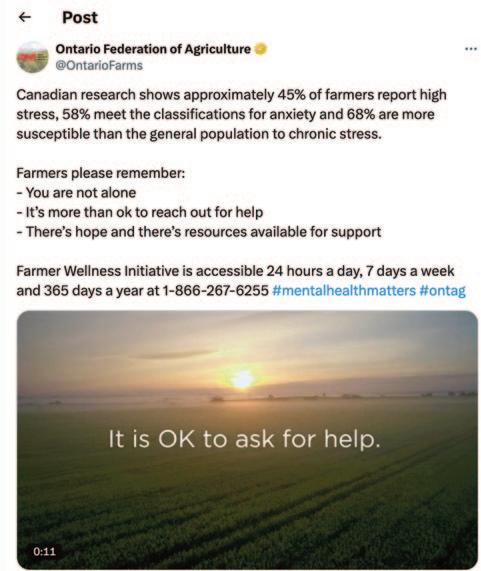
As a result, local businesses have also been impacted.
The additional stress caused by these issues was highlighted in several responses, impacting both farm families and TFWs. For farm owners, the challenge of managing this unexpected situation while also handling daily farm responsibilities can be overwhelming. Meanwhile, TFWs are now dealing with the anxiety of potentially being forced to leave their housing, with no alternative accommodations available. This leaves them concerned about the possibility of losing their jobs altogether.
Given these challenges, the OFVGA plans to use the survey results to focus on working with municipalities across the province to find solutions. This includes developing supplemental materials to further highlight how municipal policies impact local food production, particularly in the fruit and vegetable sector. A collaborative approach between the agriculture sector, municipalities and the provincial government is crucial to addressing these issues and unlocking Ontario’s agricultural potential.
Addressing these municipal challenges will provide much needed relief to growers and the TFWs who rely on this housing. It will unlock more economic activity in municipalities. And it will advance Ontario’s Grow Ontario strategy, specifically the goals of making Ontario the destination of choice for TFWs, reducing red tape for agri-food businesses on farms, and increasing the production of food grown and prepared in Ontario by 30 per cent which would not be feasible without the important contribution of the international farm workforce.
The OFVGA encourages Ontario growers to share their experiences dealing with municipalities as they arise, as this information will help address these challenges more effectively across the province. Any comments can be emailed to comms@ofvga.org.
Bill George is labour committee chair, Ontario Fruit and Vegetable Growers’ Association.
Nov 7-16 Royal Agricultural Winter Fair, Toronto, ON
Nov 9-15 Agritechnica, Hanover, Germany
Nov 18-20 Potato Growers of Alberta Annual General Meeting, Red Deer Resort & Casino, Red Deer, AB
Nov 19 Prince Edward Island Potato Board Annual Business Meeting, Charlottetown, PE
Nov 21 Prince Edward Island Potato Industry Annual Banquet, Delta Prince Edward, Charlottetown, PE
Nov 21 Ontario Produce Marketing Association Gala & Awards Night, Sheraton Fallsview Hotel, Niagara Falls, ON
Nov 23-25 Advancing Women Conference East, Sheraton Fallsview, Niagara Falls, ON
Nov 24-26 Fall Harvest Advocacy Event by Canadian Produce Marketing Association & Fruit and Vegetable Growers of Canada, Ottawa, ON
Nov 27 Farm & Food Care Ontario Harvest Gala, Delta Hotel & Conference Centre, Guelph, ON
Nov 27-29 Ontario Beekeepers’ Association Annual General Meeting, Delta Hotel, Guelph, ON
Nov 27-30 Outstanding Young Farmers National Event, Sheraton Centre, Toronto, ON
Dec 2 Fresh Vegetable Growers of Ontario Annual General Meeting, OFVGA boardroom, Guelph, ON
Dec 2-4 Grow Canada Conference, Hyatt Regency, Calgary, AB
Dec 3 CanAgPlus Annual General Meeting, Westin Hotel, Calgary, AB
Dec 3 Ontario Potato Board Annual General Meeting, Delta Guelph Hotel & Conference Centre, Guelph, ON
Dec 4 Ontario Apple Grower Meeting, Cambridge Hotel & Conference Centre, Cambridge, ON
Dec 9-11 Great Lakes Fruit, Vegetable and Farm Market Expo, Grand Rapids, MI
2026
Jan 4-11 Farm and Food Care Ontario Men’s and Women’s Curling Championship, Woolwich Memorial Centre, Elmira, ON
Jan 6-8 Potato Expo, Dallas, Texas
Jan 7-10 North American Strawberry Growers’ Association Annual Meeting and Symposium, Holiday Inn Express, Savannah, Georgia
Jan 26-28 11th International Cool Climate Wine Symposium, Christchurch, New Zealand
Jan 27 Les Producteurs de Pommes du Québec Annual General Meeting, Plaza Rive-Sud, La Prairie, QC
Jan 27-29 Nova Scotia Fruit Growers’ Association Convention, Old Orchard Inn, Greenwich, NS
Jan 28-30 Manitoba Potato Production Days, Brandon, MB
Feb 4-7 Fruit Logistica, Berlin, Germany
Feb 8-11 International Fruit Tree Association Annual General Meeting, Fresco, CA

As we get close to the end of the year, plans need to be made for 2026. Getting the right amount of inventory produced and into the stores, at the right time, is one key element of success for a producer. Easy for us to say -- challenging for you to execute.
Your sales people play a key role in how much inventory should be produced and when it needs to be ready to go. They should understand the market and anticipate what your customers will require, before they even know they need it.
Forecasting volume accurately is science and art
It is a challenge to determine how much product the market will require. Your sales people do have some facts that they should be able to access to help with the forecast. They also should have a feel for the market and customers. This combination of facts and feel is the science and the art.
The science
You need accurate data in your business. Start with sales history. Seasonality impacts the sales of many fresh products. Often a full year of volume sales will be needed before you can predict the future. The best sales history is by customer and by item in your business. Often there are different dynamics going on with each of these, so it pays to focus on both. Use the history, with adjustments for recent trends to begin the planning process. If you do not have sales history, you will have to resort to forecasting sales by point of distribution until you build the history. This method involves looking at the number of stores/locations where your product is for sale and forecasting the units per store/location per week or per month.
Recent trends can have a big impact on the volume you need to produce. Every category is different so you should decide what “recent” looks like for your business. You should also factor in the overall trends for the segments of the market in which you are listed. NielsenIQ and other data-focused companies
share information about sales trends. Recently I was at an event where they shared information about the growth of club and discount, at the expense of conventional stores. You should factor this type of information into sales forecasting. If your products are only available in conventional stores, and they are down two per cent (which is a lot of dollars), your volume could be down just because there are fewer people shopping in these stores. Your sales people should be trying to qualify this information at a granular level.
Another fact to consider in forecasting sales is service level. If you had some issues where product did not get into the market on time you might have missed some sales. Assuming you have the issue fixed, your sales people should account for this in forecasting.
Sales are impacted by many factors. Some are within your control and some might be your competition or your customers. Your sales people should be keeping notes throughout the year that become very useful when forecasting the future. If your competition over invested in the summer this could have impacted your volume. A growing year with low yields can impact your sales history. If you know you could have sold more you need to capture that information.
Industry trends, consumer trends and customer sales are often available through trade publications, Farm Credit Canada and industry associations. If you are selling through the large, publicly traded retailers they report their sales every quarter. Costco reports them every month.
The art
Now the fun begins, and this is where your sales people should add value to the process. Market knowledge, category expertise and customer relationships are something your sales people should have. They need to develop this knowledge over periods of time and ChatGPT will not help you much here. Your sales people need to be out in the market, talking to people in stores, at the office and in the industry.
They should be collecting information all the time that will be relevant when it comes time to build a sales forecast. A packaging supplier revealing that your competition doubled their order or people in stores sharing that your competition has been having service level problems are valuable insight to be considered in sales forecasts.
An accurate sales forecast/ demand plan is a business win
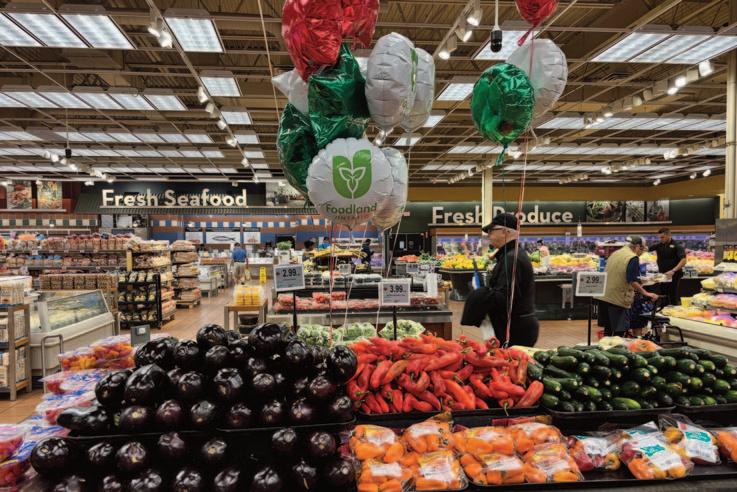
Your sales people should not be doing this in isolation. Every department in your business should be involved. If you plan an aggressive consumer marketing push in Q2 then your sales forecast should reflect some return on that investment. If your production people say that the volume could increase 10 per cent with a new growing technique, they need to deliver the 10 per cent increase. Every part of the business should have input on sales forecasting. Ultimately, your sales people need to deliver the numbers, but everyone should be motivated to achieve these forecasts. Sales people become disengaged when the production part of the business wants to produce 15,000 units when the sales people are convinced the maximum is 12,500 units.
Accuracy should win over exceeding the forecast
This is a fine line. Most people are motivated by exceeding expectations. The challenge becomes when the actual exceeds the forecast, and the business has to either scramble to get product produced or disappoint customers. When I was at Loblaw we worked hard to get better at the seasonal ups and downs in different departments. Floral was one department where we would have huge swings in sales, week to week. Valentines’ week was 10X an average week. The first couple of years we did not forecast accurately, and we were scrambling and seemed very busy. Working so hard to ‘make it happen’. As we improved our forecasting and got prepared properly it did not seem like we were that busy, but sales did much better. When you are prepared and have everything in place to deliver a strong sales number, you have done the work in advance and have the people in place. It seems less of a rush, but we definitely served customers in the store better and
maximized the opportunity.
Talk to your customers
I would always encourage producers to initiate the conversation with your customers and that starts with you providing a number or forecast. There is nothing worse than a supplier coming into a retailer expecting them to have all the answers. It is your business so take the initiative. No doubt they will have some perspective on where sales are going and probably help you make your forecast more accurate. When your sales people have thought through what the numbers will be, your customers will respect you for doing the work and understanding your business with them.
If you are delivering direct to stores (DSD) you really need accurate forecasts. You are responsible for keeping that shelf full. You need to know what is required before you go to the store.
If you are delivering to the warehouse do not just accept every purchase order you receive. Check the orders relative to your

forecasts. If they are not aligned something is happening. Buyers are an entry level position in most large retailers. They change often and they are depending on ‘the system’ to predict the volume they need. If you are concerned it is too much or not enough, try to talk to them and determine why. There could be a very good reason such as your farm is profiled in the ad flyer and they did not tell you, so they require twice as much as a regular week. You can’t always predict everything, but an accurate sales forecast should ensure your business maximizes opportunities. It will also ensure you have the best chance at getting all of the inventory into the market when and where it is needed.
Peter Chapman is a retail consultant, professional speaker and the author of A la Cart — a suppliers’ guide to retailer’s priorities. Peter is based in Halifax, N.S. where he is the principal at SKUFood. Peter works with producers and processors to help them get their products on the shelf and into the shopping cart.


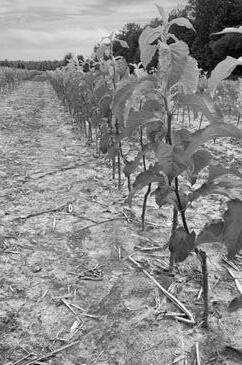



KAREN DAVIDSON
Avondale, Newfoundland -Sequestered at the end of a rutted trail that passes over shallow creeks, the world’s only field test site for potato wart is located in one of the most remote regions of Canada. By design.
According to Dr. Linda Jewell, research scientist for Agriculture and Agri-Food Canada (AAFC), it’s for good reason that staff must truck overland through bush to a fenced field about an hour’s drive west of St. John’s. Potato wart took on an urgency in Canada after the untreatable soil-borne
fungus was confirmed to be present in two Prince Edward Island (PEI) fields in October 2021. Millions of dollars were lost when the Canadian Food Inspection Agency (CFIA) pre-emptively shut the island’s border to tablestock and seed exports to the U.S. The border didn’t reopen until April 2022, and only then to fresh potatoes, not seed.
Newfoundland has a history of its own with this infection dating back to 1909 and to prevent contagion spread to other regions, potatoes, root crops, and soil have been embargoed from leaving the island for more than a century. The Avondale open
field plot, quarantined and maintained since 1953, is ideal for in vivo research. Given the impact of the PEI discovery in 2021, AAFC upgraded the threeacre Newfoundland site with new gates, fencing and a weather station. Access to irrigation was also set up to mimic the moist conditions in which the fungus can sporulate.
For the last four years, Jewell has led a team of plant pathology researchers, testing new fungicides and biological products to control the wartcausing fungus. Known scientifically as Synchytriuim endobioticum, its spores can lie dormant for as long as 40 years


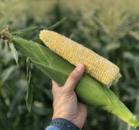
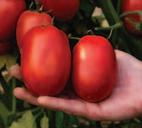

before infecting the plant to cause cauliflower-like lesions or warty growths on the potato tubers. The fungus does not pose a human health hazard, but the disfigured potatoes are unmarketable.
Her team purposely composts the warts to produce a shelfstable inoculum. The compost mixture consisting of potato wart pathogen and sand is moistened, agitated, and then stored in a controlled environment. The sand-spore mixture can then be spread as needed over soil in the quarantined area for trials.
Dr. Jewell’s work represents but one part of a multi-pronged approach to potato wart research in Canada. For several years, AAFC research scientist Dr. Hai Nguyen at the Ottawa Research and Development Centre, in collaboration with Dutch researchers, has focussed on sequencing and studying the potato wart genome. Although the potato wart disease is caused by a single species of fungus, more than 40 different types of
potato wart exist around the world. Three of those are found in PEI, and in Newfoundland and Labrador.
Across this variation, Dr. Nguyen looks to find a common identity. “We are working towards creating what I call the ‘pan-genome,’ says Nguyen. “It would be a single genome that represents all different types of potato wart.” Such research supports breeding efforts aimed at developing potato varieties having natural resistance to the fungus.
Leading the Government of Canada’s breeding efforts is Dr. David De Koeyer, at AAFC’s National Potato Breeding Program in Fredericton, New Brunswick. In addition to dealing with many different types of potato wart, persistence of infecting spores in the soil over long periods of time is another challenge for breeders he says.
Continued on page 15

Continued from page 14
“We have identified some resistant varieties for fresh potato producers, including russet and red potato varieties, but we haven’t yet found a strong French fry or potato chip processing variety with the same resistance potential,” says De Koeyer. “That’s where we are focusing our breeding efforts with support from the PEI Potato Board.”
Greg Donald, general manager, PEI Potato Board, adds, “Other entities such as Cavendish Farms have a significant breeding program. And globally, companies such as HZPC and Agrico are developing wart-resistant varieties. Being at the forefront of research has made us leaders in providing the safest potatoes to markets all over.”


A team of researchers is studying potential remedies for potato wart including new fungicides and biological controls. Data are yet to be analyzed after a droughty 2025 summer. They are testing potential resistant potato varieties from AAFC researcher Dr. De Koeyer. L-R: Amanda Turpin, MSc student (AAFC/Memorial University of Newfoundland, Department of Biology); Dr. Linda Jewell, research scientist in plant pathology, AAFC; Dr. Mohsin Zaidi, biologist; and Karen Compton, plant pathology technician. (photo supplied)
Overseeing almost daily treks though Newfoundland bush, Dr. Jewell is convinced that no single solution will emerge. Certainly, genetics will eventually play a major role, but resistance development has been shown to be a painstakingly slow process in other sectors of agriculture. She believes systemic fungicides and biologicals may be able to provide some relief to growers in the near term.
Several potato varieties susceptible to wart -- Russet Burbank for example -- are being researched at Avondale using a
range of trials to test treatments. One of these, a study looking at the impact of soil inoculants, is studying whether potato wart spores may be damaged by applying chitin to the soil.
Chitin, a natural polymer similar in function to keratin, is
found in the exoskeletons of arthropods such as insects and crustaceans, and also in the cell walls of fungi. “It’s naturally found in the soil and we are looking at its efficacy to affect resting spores,” says Jewell. These resting spores give rise to one of the more problematic mysteries of potato wart: what prompts them to germinate? Dr. Jewell is of the opinion that if factors can trigger resting spores to release zoospores, or spores at
their mobile state can be identified, an opportunity might exist to interrupt the life cycle and “mop up” the infection so to speak.
In agriculture, mysteries abound. In case of potato wart, finding the key to resistance and treatment relies on the years-long hard work and dedication of scientists like Drs. Jewell, Nguyen, and De Koeyer. But of course research first relies on long-term funding.

CANARIO REAL 73 Day Hot Banana Pepper
Consistent yields over wide range of growing conditions. Very uniform fruit shape, firm flesh and deep red interior. Time and time again customers rate this our best tasting watermelon. Have your customers ask for this variety by name. IR: Co1, Fon1
RENEGADE 44 Day Green Zucchini Hybrid
High quality medium-dark green fruit with light flecking. High yielding. Early male flowers help with early yields. Open and erect plant. Minimal spines on the petioles. Strong disease package helps insure longer harvests. IR: Px, PRSV, CMV, ZYMV



Ontario, Alberta, Quebec, Maritime (905) 806-7372 aknoop@seedway.com

Manitoba, Ontario, Saskatchewan (519) 835-0664 ddeleebeeck@seedway.com

and



storage potential.
Nice end of the season, dark red onion with a good potential for large size bulbs. Very round, uniform and firm. Suited for transplants or direct sowing.

Backed by a robust disease resistance and dependable field performance, it produces a concentrated set of uniform, blocky fruit with very smooth walls and a glossy finish. The fruit size is large to extra-large, making it an excellent choice for place-pack markets.

A
Nice early cabbage with a perfectly round and intensive red head, ideal for fresh market presentation. Harvesting period is from early summer to late season. Vigorous plants build a strong frame with large wrapper foliage.

Strong out of the ground, quick to maturity, easy to pick in 68 days. Deep blocky kernels makes for a juicy sweet bite into a 16-18 row cob. The earliness of this variety is complimented with the plant architecture of a mid season variety with a mid height cob placement. This SH2 Bicolour will find a place on your farm.
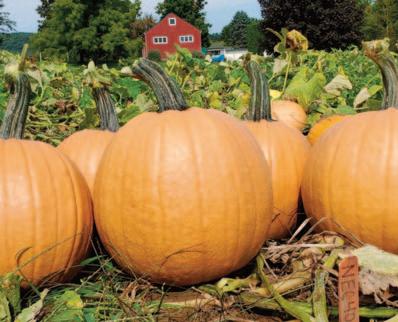
NEW! CIDER PUMPKIN
96-105 day maturity. Elevate fall displays with Cider’s charm and durability. Its smooth, eye-catching buckskin colouration sets it apart from traditional varieties, offering a sophisticated look that complements mixed displays beautifully. Well-adapted to a wide range of growing conditions.

Medium green, hybrid zucchini with light flecking. The open and erect plant habit allows for ease of harvest. Backed with excellent uniformity and a good disease package it will make this your go to zucchini.

NEW! MANSFIELD
115 day maturity, delivering exceptional size potential. Tops are impressively strong and very upright, supporting easy harvest and overall plant health. Offers reliable longterm storage, holding firm all the way until June with a durable, resilient skin that maintains quality even after extended storage.
FOCUS: SEED & ROOTSTOCK

In 68 days, Dash will give you a high quality, first early sweet corn, with good vigor and excellent eating quality. Dash will pair well with Solstice and Xanadu in the second planting slot. Dash features a good ear and plant size for its maturity.
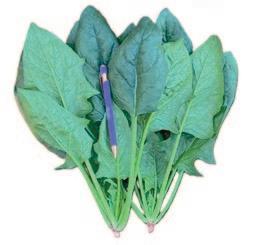
Asian type spinach. 30-40 days after sowing. Pointed dark green leaves. Upright plant with strong petioles. Coldtolerant and fast-growing. Resistant to DM race 1~7, 9, 11, 13, 15. Ideal for planting in spring and fall.

Calhoun is a 90-day pie pumpkin that was designed for the boxing market and those trimming handles, Calhoun is a slightly upright pumpkin featuring a dark orange color with Rupp Gold Flecking, and a thick, dark handle. High PM resistance.

A striking purple/red Chinese cabbage. 70~80 days after transplanting. 2-3 Lbs. The barrel-shaped head has a vibrant purple exterior and interior and is excellent for salads and Asian dishes. Rich in anthocyanin, offering antioxidant and anti-inflammatory benefits. Tolerant to bolting, ideal for sowing from late spring through fall.



Crisson is an impressive dark orange pumpkin. Its strong, dark handle makes moving this 20-25 lb ribbed pumpkin easy. Spaced properly
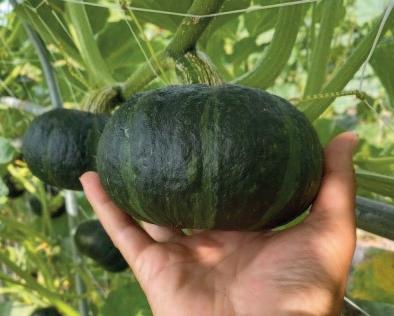
Mini or baby kabocha variety. Ready in 70-80 days after sowing. Attractive, flat fruits with a dark green color and light green strips. Deep orange flesh, powdery and sweet with a chestnut flavor. Optimal eating quality after one month of storage. Typically produces 8 to 12 fruits per plant, each weighing 1.2 to 1.5 lbs. Vigorous and disease resistant.

ENZA ZADEN



is a yellow blocky variety
a
and strong plant structure. It has a regular fruit setting and produces nicely blocky-shaped fruits that colour quickly. This variety is known for its top production and fruits that are characterized by their heavy weight and great quality.
“
Spinach is one of the most dynamic crops in our portfolio.
~ Philip Simons BASF/Nunhems
With a focus on dependable yield and advanced disease resistance, BASF’s vegetable seeds business, operating in the market under the Nunhems brand, offers a spinach portfolio that reflects years of research, breeding expertise and fieldtested performance tailored to today’s production challenges.
As a key crop within the vegetable seed portfolio, BASF | Nunhems spinach offers top-quality genetics to help growers maintain profitability under increasingly complex conditions. One of the more significant threats spinach will faces is downy mildew, caused by Peronospora effusa.
BASF | Nunhems spinach varieties are integrated with a combination of premium traits, including vibrant colour, tender texture, fast-growth qualities and adaptability across different production environments. Through years of investment in research and development for resistance breeding, BASF | Nunhems’ lineup now includes more than 10 spinach varieties resistant to Peronospora effusa in the U.S. and Canada, giving growers more options and greater peace of mind for market production.
Beyond downy mildew, BASF | Nunhems varieties help growers combat additional challenges such as damping off, leaf spot, and white rust—all of which can damage crops and negatively impact the return on investment for growers.
“Spinach is one of the most dynamic crops in our portfolio,” said Philip Simons, senior spinach breeder at BASF | Nunhems. “Our process starts with a broad genetic foundation, including wild accessions from spinach’s center of origin in the mountains of Caucasus. This allows us to build in strong resistance while maintaining the visual and textural quality growers and consumers expect.”
This approach, backed by active participation in the International Working Group on Peronospora (IWGP), a group that works to identify downy mildew races and track the emergence of new, resistancebreaking isolates, allows BASF | Nunhems to stay ahead of emerging pathogen strains and keep spinach growers equipped with the best available tools. The company’s ability to respond quickly to new disease threats is rooted in its strong pre-breeding efforts and ongoing field

performance evaluations.
As regulatory changes reduce access to certain seed treatments, genetic solutions are becoming even more critical. Simons emphasizes that it’s not just about choosing the right variety, it’s also about diversification.
“We always recommend growers use multiple spinach varieties in the same field—even if they’re all from Nunhems,” said Esteban Chavez Perez, specialist of product development for lettuce and spinach, open field, Americas. “That way, if a new isolate shows up that affects one variety, the others can still perform. Genetic diversity protects your yield and keeps you in business.”
Standout varieties such as Nembus, and Acrux, a newer option gaining traction for its resistance and consistency, continue to lead the market. As most spinach varieties phase out of production within four years
due to evolving resistance needs, BASF | Nunhems’ ability to deliver fresh, reliable genetics consistently year after year is what sets it apart.
On the company’s website, the sowing systems are listed for desert and coast. The BASF | Nunhems team indicates that Canadian growers should consult the desert chart for conditions that are fresh to cool. They recommend selecting varieties that are medium speed to fast.
“We have had good comments about NUN 07557 SPS, Seginus, Acrux and we consider Arakis would do a good job as well,” says Simons. “Nembus is another pretty stable variety, with good adaptability to different growing conditions.”
The charts give ratings for savoyness. This is the level of blistering (called savoy) on the leaves. The company distinguishes ‘smooth’ (such as variety Regor), ‘semi savoy’ (NUN 07557
SPS/Castula) and ‘savoy’ (NUN 07553 SPS/Aries). Also, ‘quarter savoy’ is used to describe that the leaves have some blistering (such as Arakis). In general, some savoy (blistering) is wanted because it makes filling the bags easier, that is the leaves do not stick together. But for washing, the ‘smooth’ leaves are easier. What level of bolting is tolerable? As growers know, spinach starts bolting under long day-length conditions (13 hours +). So, in general there is no issue in winter’s short days and just very limited issues in spring and autumn. For summer conditions with long days of more than 13 hours and warmer temperatures, the company recommends a level of 7, on a scale of 1-9, to avoid fast bolting.
Source: BASF / Nunhems
Aiming Wang, a research scientist with Agriculture and Agri-Food Canada, is working to stop Tomato Brown Rugose Fruit Virus (ToBRFV) from threatening Canadian greenhouse tomatoes and peppers. Based at the London Research and Development Centre, he’s studying the infection process and working to develop novel genetic resistance to ToBRFV.
Researchers want to better understand how ToBRFV overcomes broad-spectrum resistance given by Tm-22 and bring back Tm-22-mediated resistance to ToBRFV.
Approximately 16,000 individual tomato plants have been screened, with 30 lines found to have resistance/ tolerance to ToBRFV. Resistance in one line has been confirmed after four generations, while resistance in other lines is yet to be confirmed. The research team has cloned the resistance gene Tm22 and ToBRFV movement protein (MP). It was found neither are stable as they have a very short turn-over time. A tomato protein involved in ToBRFV MP degradation was identified.
By investigating the deficiency of two ToBRFV proteins, including coat protein (CP) and MP on virus replication and infection by generation of CPand MP-deficient mutants followed by protoplast transfection and plant infection assays, it was found both CP and MP provide supplementary but not essential roles in virus replication at the early infection stage. Both MP and CP are necessary for ToBRFV infection.
Researchers have sequenced the full genome sequences of 28 isolates and partial genomic sequences of an additional 100 isolates. Most Canadian isolates were found to be closely related to isolates from the United States and Mexico. However, several Canadian isolates seem to be distantly related, pointing to multiple introductions to Canadian production systems. Two conserved residues in CP were found to be essential for ToBRFV infection.
Researchers are working to finish screening for ToBRFV resistance from the tomato mutant population, confirm resistance in future generations of identified lines, and initiate genetic work to identify the genes needed for resistance. The team will continue to monitor ToBRFV diversity in Canada, and decode what causes ToBRFV break-down of Tm22 resistance. They are also assessing the incidence of ToBRFV and Pepino mosaic virus (PepMV) mixed infection.
Source: Fruit and Vegetable Growers of Canada website
Editor’s note: Canadian horticulture cluster research is primarily led by the Canadian AgriScience Cluster for Horticulture (CACH), which is in its fourth iteration (Cluster 4) from 2023 to 2028. Funded by Agriculture and Agri-Food Canada and the Fruit and Vegetable Growers of Canada (FVGC), this initiative focuses on improving the innovation, competitiveness, and sustainability of the fruit and vegetable industry across key commodities such as apples, berries, greenhouse vegetables, potatoes, and field vegetables.


Growers, we hear you.
Every year, you share new characteristics you’d like to see in pumpkins and winter squash. Our in-house breeding program keeps those in mind as we work to bring new and better varieties to market.









Every year, we conduct real-world field trials at our office/research farm. These trials allow us to plant, monitor, and harvest vegetables - just as you do. We collect data from these trials so, when you’re ready to order, we can help you make the best decisions.
Our goal is your successful harvest!
FOCUS: SEED & ROOTSTOCK
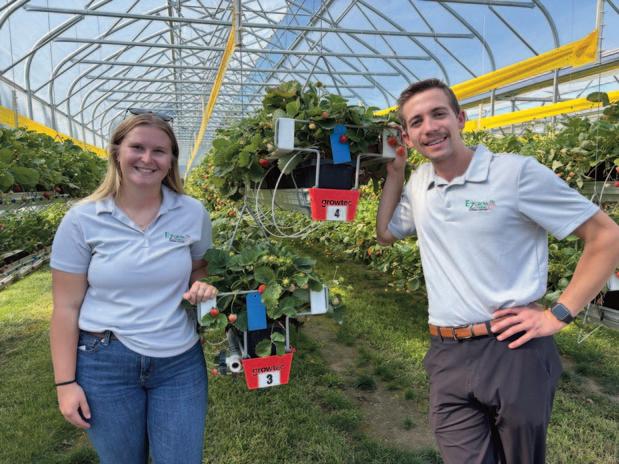

KAREN DAVIDSON
As high tunnel strawberry production becomes more common, growers are searching for answers to complex questions. Is a single-gutter system more productive than a double-gutter system?
Is it better to stick with a frozen plug or consider an ambient or fresh plug?
Is Albion still the best variety to use or are European varieties showing more promise?
Do hybrid seed varieties also play a role?
That’s why Berry Growers of
Ontario organized its first High Tunnel Strawberry Day at EZ Grow Farms, Langton, Ontario in September 2025. It hosts the Ed Zamencik Berry Trial Center which is testing globally available varieties in three different structures under different management conditions.
As Kyle Dick explains, the center was built in 2024 to better understand the management challenges in Ontario and beyond. “We’re trialling and developing solutions to mitigate production gaps. We’re understanding how to grow a plant that’s tailored to high tunnel systems. And within that regime, we’re trialling new technology in
terms of structures, substrates and products.”
He’s the integrated crop care specialist at EZ Grow Farms. For the last year, he’s used his crop protection background to address ongoing pests: powdery mildew, spotted wing drosophila, twospotted spider mites and thrips. Their IPM treatments include biological controls, cultural controls such as canopy management and chemical control in terms of sprays or drench applications. Still to be explored in future research are fruit-rotting fungi: Colletotrichum and Neopestalotitopsis
Substrate choice is an input

still to be studied because there are multiple products on the market at different price points. At this stage, Dick and his team prefer 100 per cent coco coir substrate, noting that the right ratio is needed between fine pith and chunk.
“What we’re looking for is consistency in yields from this substrate,” says Dick. “Consistent drainage is needed for uniform uptake of water and nutrients. Depending on light levels, the strawberries are fertigated every day.”
And what to plant in that substrate? European varieties are overtaking Albion, commercialized in 2006 and a standard bearer ever since in North America.
At the test centre, Albion was eclipsed in yield in favour of four other varieties. Take Karima, for example, which has very high yield potential, moderate tolerance to powdery mildew, acceptable flavour, moderate needs for crop maintenance, strong and long trusses and good vigour. Karima has been bred by Italian company Mattivi.
Also attracting attention are two ever-bearing varieties by Dutch company Flevoberry: Favori and Florice. On the one hand, Favori has excellent flavour and fruit quality with high-yielding potential but suffers reduced fruit size when temperatures rise. Florice performs particularly well in the early season, has consistent flushes and excellent fruit quality. As temperatures rise, this variety shows seediness.
Alturas, bred by California Berry Cultivars, is in the mix. This variety has moderate flavour and good shelf life, large and firm fruit, moderate to high yield potential, moderate pest and disease tolerance. It has a classic California compact canopy, but needs extra leaf pruning.
These agronomic traits are well appreciated by growers, but let’s not forget shelf life. The best breeding program will be for naught if the strawberry can’t withstand the rigours of the cold chain from farm to consumer. As Dick explains, shelf life is measured by cooling just-picked strawberries at 5°C and then evaluated after two weeks. The variety must stand up in terms of firmness, appearance, colour and be free from defects. The strawberries are packed in clamshells – standard practice. Depending on the variety, these new varieties can last from seven to 16 days.
“Genetics are changing rapidly and frequently,” says Dick. “To maintain competitiveness, you have to stay on top of global breeding programs.”
At first blush, it may seem there’s a trend to adopting European methods and varieties. As Dick cautions, not every practice is suitable for Canadian conditions. The double-gutter system, for example, promises higher yields. However, trials so far would indicate that there’s less air flow and inconsistent ripening in this system.
“We’re leaning more towards single-gutter systems,” says Dick. Plans for 2026 are shaping up with increased acreage. The Centre will be examining a regime with short-day strawberry varieties planted in early spring followed by day-neutral fresh plugs. And the question still remains: is there value in a 250 cc plug vs a 135 cc or 50 cc plug? Dick is not certain if a heavier plug has an advantage. The industry will be watching to see if a more robust root system results in faster leaf development.
EZ Grow is actively investing in research and data-driven practices to support the industry’s shift toward more sustainable and reliable strawberry production.
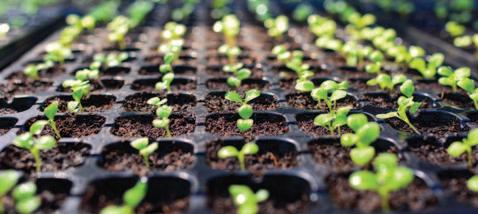

MANSFIELD F1
Early Spanish onion that produces good-sized bulbs for its maturity. Small necks and good skin. Good storage potential.

BRENNAN Y.B.R. F1
Bronco type with resistance to black rot. Heads 昀ll early during growth.



DASH F1
The earliest variety in our selection of bicolour Sh2. Well-covered ears with bright and vivid kernel colours. Crisp yet tender kernels with a delicious sweet 昀avor. Good vigor for early season conditions.

SCARLETT F1
New beet with improved quality and shape. Rounder and smoother bulbs with a smaller tap root than those of comparable varieties. The clean tops hold well until late in the Fall. Excellent uniformity. Suitable for fresh markets, processing and storage.
Eastern Montérégie & Maritime Provinces Marie-Pierre Grimard, P. Tech marie-pierre.grimard@norseco.com 450 261-7468 Western Montérégie Marie-Hélène Monchamp marie-helene.monchamp@norseco.com 514 968-2906


Central and Eastern Quebec Stéphanie Gosselin, Agr. stephanie.gosselin@norseco.com 418 254-1469
norseco_of昀ciel
Central & Eastern Québec Yves Thibault, Agr. yves.thibault@norseco.com 418 660-1498
Organic & Small-Scale Farms Katherine Jouvet, Agr. katherine.jouvet@norseco.com 514 386-0277

The purpose of the Canadian Berry Trial Network (CBTN) is to look into how new and established berry cultivars will perform in the typical berry growing regions of British Columbia, Ontario, Québec and Nova Scotia. Fruit quality traits and yield potential are evaluated along with the economic competitiveness of new berry cultivars.
availability. These included 10 varieties each of short-day (Junebearing) and long-day (dayneutral) strawberries with some variation between locations due to differences in provincial priorities. There were numbered selections from Planasa and new cultivars from UC Davis among the trial varieties. Plants were purchased and circulated during the spring and planted in new field trials. The next trial plantings will be in 2026 for blueberry and 2027 for raspberry.


highbush varieties, with some variation between locations.
Harvest season began in late June in B.C. and mid-July in Ontario, Québec and Nova Scotia. The latest varieties are expected to ripen in September. Data aggregation and analysis will be done over the winter.
Raspberry trials planted in 2024 are being managed to promote plant health and vigour but will not be harvested or evaluated this season. On-farm raspberry trials conducted in B.C.
The researchers are currently selecting trial varieties for next year. They’re establishing new replicated trials at research farms in four provinces and new unreplicated trials at grower sites in B.C. The team is evaluating established trials and presenting one research talk or tour per province.
Key takeaways

Strawberry trials planted last year (2024) are being evaluated. These include around 10 shortday and 10 long-day varieties, with some variation between

Blueberry trials planted in 2022 are starting to be evaluated. These include around 16 highbush varieties, with some variation between locations.
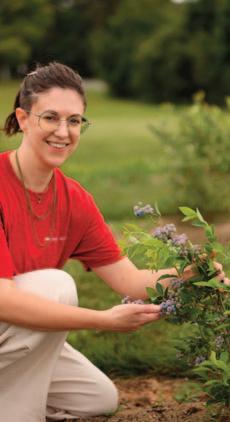
Harvest season began in late June in B.C. and mid-July in Ontario, Québec and Nova Scotia. The latest varieties are expected to ripen in September. Raspberry trials planted in 2024 are being managed to promote plant health and vigour but will not be harvested or evaluated this season.
On-farm raspberry trials conducted in B.C. showed promise include BC 1855.11 and BC 1855.14. These will be included in the 2027 raspberry replicated trials as they are good options for fresh markets and mechanized harvest.
Dr. Beatrice Amyotte is a research scientist for small fruit germplasm development with Agriculture and Agri-Food Canada at the Kentville Research and Development Centre.






following grow season.
Fall may signal the end of the growing season, but it’s not the time to wrap up weed management. In fact, it’s the ideal time to start planning for the following year and considering fall herbicide applications that could be effective on the whole range of weeds, from summer annual to perennial ones, even during the
Why apply herbicides in the fall?
While most soil-applied residual herbicides can be used in the spring, fall applications offer several key advantages:
• Control of fall and early spring-emerging weeds such as Canada fleabane, chickweed, shepherd’s purse, annual
bluegrass, downy brome and stinkweed.
• Reduced pressure on spring workload, when ideal herbicide application windows can be missed due to time constraints, increasing crop risk and reducing weed control efficacy.
• Improved reliability of incorporation, as fall’s more predictable precipitation helps ensure proper soil activation of herbicides.


• Lower risk of crop injury, particularly for products that must be applied during dormancy.
• Opportunity for effective post-emergence applications for perennial weeds such as for fescues, goldenrod, or Canada thistle, and summer annuals before they contribute further to the seedbank.
What happens to fall-applied residual herbicides over winter?
Degradation of most herbicides in soil slows significantly at low temperatures and almost halts in frozen ground. This is because biological degradation and mineralization are highly temperature dependent. As a result, fallapplied herbicides may still provide effective residual control into the spring. However, the persistence and efficacy will depend on application timing, herbicide properties and environmental conditions.
While degradation slows, it doesn’t stop completely, so fall applications generally won’t last as long and be as effective as ideally timed spring applications. The primary benefit is effective fall weed control, with the added advantage of residual activity into the next growing season, especially valuable if spring conditions prevent timely herbicide applications and the first flush of weeds is missed.
To maximize the residual potential of soil-applied herbicides, ensure the soil surface is clean and free of plant debris to allow even distribution and incorporation. When properly applied, late fall applications can be effective through the spring and even into early to midsummer, especially for persistent products such as Casoron and
When is the right time for fall applications?
Timing will depend on the target weeds and the herbicide:
• For perennial weeds using post-emergent herbicides, apply early in the fall while the plants are still actively transporting carbohydrates to underground structures. Applications made after the first frost, leaf fall or dormancy will be less effective.
• For winter annuals targeted with residual herbicides, apply before the peak fall emergence.
• For residual spring weed control the later the application, but before the soil freezes or there’s snow cover, the longer the residual effect into spring.
• Some products require the crop to be fully dormant, and others, such as Casoron, should only be applied after temperatures have dropped significantly.
• Weather conditions are critical, particularly rainfall forecasts, to ensure proper incorporation and avoid runoff. Applications must always be made before the ground freezes.
Residual herbicides for fall use in blueberries and raspberries
To the left is a list of herbicides with sufficient persistence to provide residual control into the spring. Not all registered products are listed. Always consult the most up-todate label before application.
Cesar Cappa is weed management specialist, Ontario Ministry of Agriculture, Food and Agribusiness.
KENDRA
In recent years, several new raspberry varieties have been introduced that may be of interest to Ontario berry growers. Some, such as AAC Eden, are already familiar and being cultivated in the province. Others -- such as Cornell AgriTech’s “Crimson series” of raspberry varieties -are not yet grown in Ontario but offer promising traits that could benefit local production.
Crimson Night is a relatively new primocane-fruiting raspberry variety from the Cornell AgriTech berry breeding program. Its berries are medium to large with a conic shape, very dark red, firm, and very sweet. Crimson Night is a fallbearing, mid-late season variety. The canes of this variety are described as vigorous and productive, thick and sturdy. Some other defining characteristics of Crimson Night are its resistance to powdery mildew, susceptibility to phytophthora root rot, and its excellent frozen quality.
Crimson Blush
Crimson Blush is another new addition to Cornell AgriTech’s “Crimson series”. It is a primocane-fruiting raspberry variety that develops from blush pink into a bright red berry that is large, sweet, and firm. Crimson Blush, with a late harvest season beginning in early September under high tunnels, can be a good option for double cropping. It can be grown under tunnels to further extend the fall season; however, it was originally bred for a
traditional open field system. Crimson Blush is known to have vigorous cane production with canes reaching 2.4 m tall.
Crimson Beauty
Along with Crimson Blush, Crimson Beauty is a recent addition to the “Crimson series” produced from the Cornell AgriTech berry breeding program. It produces large, glossy, bright red berries with a strong flavour and good firmness. This is a primocane-fruiting variety, and the harvest season under high tunnels begins in late July to early August in New York. Crimson Beauty was bred specifically for growing in high tunnels and its canes (approximately 1.5 m tall) grow upright, requiring less trellising than taller varieties, and making this variety easy to pick.
Crimson Treasure is a red raspberry variety developed at the Cornell AgriTech berry breeding program. This variety produces large, conic, firm, bright red berries with good flavour and shelf life. Crimson Treasure is a high yielding (13-15 t/ha) primocane-fruiting variety with a long harvest period starting in early August when grown under high tunnels in New York. It has upright, 1.5m tall, selfsupporting canes that are highly branched and fruit is displayed at the top of canes for easy harvest. Crimson Treasure has strong resistance to powdery mildew and good resistance to Phytophthora root rot.
Double Gold is a variety that was also developed at the Cornell AgriTech berry
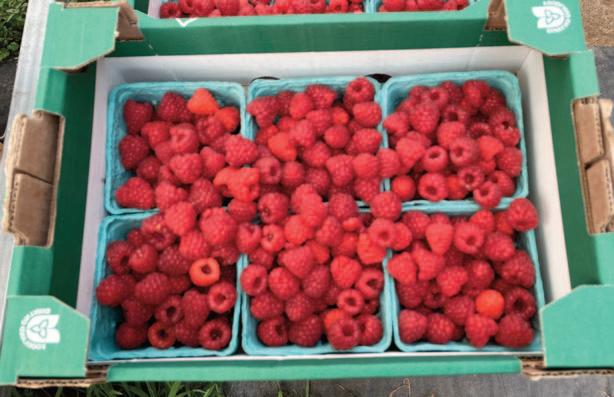
breeding program. It produces distinctive conic, medium sized, peach-pink berries that are relatively soft, delicate, and flavourful. Double Gold can produce two crops per season, with primocanes fruiting from September through mid-October, and floricanes fruiting from late June through mid-July. Double Gold is high yielding, has vigorous and heavy cane production and is tolerant to Phytophthora root rot. Double Gold is available from Strawberry Tyme and Lareault.
AAC Eden was developed in Nova Scotia at AAFC-AAC Kentville. The berries are silky rather than shiny, light red, large, and firm. AAC Eden is a summer-fruiting, mid season variety, with a peak harvest date at the end of July in Nova Scotia. Eden canes are spineless. This variety is consistently
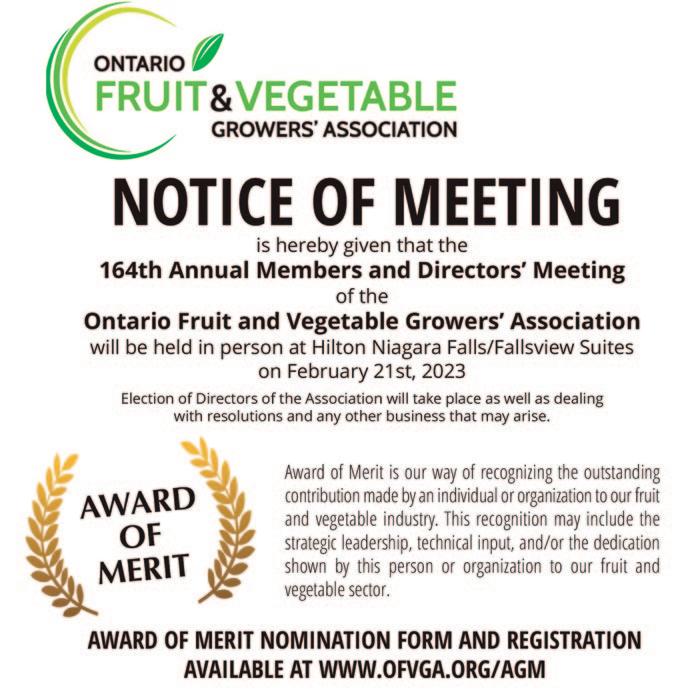
is hereby given that the 167TH Annual Members and Directors’ Meeting of the Ontario Fruit and Vegetable Growers’ Association will be held in person at Hilton Niagara Falls/Fallsview Hotel & Suites on Tuesday, February 17, 2026
high yielding and produces berries that are easily picked. AAC Eden is available at Lareault and Keddy Nursery.
Double Gold and Eden are available from Canadian nurseries for Ontario growers. Crimson Beauty and Crimson Blush are currently being trialed by the Berry Growers of Ontario, and there is potential in pursuing a propagation agreement. In Canada, the Ontario Berry propagation program does all the licensing for Cornell varieties. If interested in growing these new varieties, growers should speak to their Canadian nursery who can then contact Bernie Solymar at the Berry Growers of Ontario to discuss interest in licensing agreements. (info@ontarioberries.com)
Kendra Workman is fruit crop summer research assistant, OMAFA. Erica Pate is fruit crop specialist, OMAFA.
On October 8, 2025, the Canadian Food Inspection Agency (CFIA) announced amendments to the Health of Animals Regulations and the Safe Food for Canadians Regulations (SFCR), published in the Canada Gazette, Part II. The changes, introduced as part of CFIA's Red Tape Reduction initiative, aim to reduce regulatory burden while maintaining food safety and consumer protection.
The authority to maintain fresh fruit and vegetable grade standards (other than onions, potatoes and apples) has been transferred from the CFIA to the Fruit and Vegetable Dispute Resolution Corporation.
According to DRC president & CEO, Luc Mougeot, “The regulatory change related to fresh fruit and vegetable grade standards means these standards can be changed more quickly to

meet the needs of the industry. This will encourage innovation, flexibility and competitiveness for the sector. Industry has encouraged and supported this change for some time and DRC welcomes the change and the opportunity to take on responsibility for maintaining certain grade standards.”
Source: Canadian Food Inspection Agency October 8, 2025 and Dispute Resolution Corporation October 10, 2025 news release
KATIE GOLDENHAR, AMANDA TRACEY & DENISE BEATON
Asking growers to clean equipment, especially in the middle of the field season, is a tall order. Our job in this article is to convince you that it’s worth it, as simple biosecurity measures can save you a lot of money in the long run.
What is biosecurity?
Biosecurity refers to the measures taken to reduce the risk of introduction and spread of harmful organisms. Sometimes these measures are regulated or related to trade. This article is not specifically about any one organism but measures you can take to reduce your risk of many. In livestock and greenhouse production, where severe losses can occur rapidly, biosecurity is vital to any operation. In field horticulture, there isn’t always an obvious threat that would require biosecurity to be taken seriously. Some diseases such as downy mildew or powdery mildew cannot overwinter easily in our climate and are introduced via air dispersal in the summer. Biosecurity will do little for these diseases but any disease that can be spread through movement of soil or on equipment, biosecurity measures will play a role in your IPM program. Diseases of concern include but are not limited to white rot, nematodes, Phytophthora capsici, anthracnose, clubroot, Fusarium wilt and viruses.
What should you do? What can you do?
Anything is better than nothing. Working in young and/or healthy fields first during the day is a good start to avoid spreading spores that may cling to equipment/people. Then you can wash your equipment, change boots and clothing at the end of the day. If you have a known disease outbreak in a field, work in these fields last and consider a season end clean of all equipment used in the field.
Washing field equipment is a daunting task – what exactly should you do? There are three steps to consider:
1. Remove dirt and plant debris
2. Wash with soap and water
3. Disinfect with a chemical (bleach, quat ammonia, etc.) – most disinfectants will not work when organic matter is present, this is why removal of debris/soil is an important first step. Bleach can be corrosive, so caution is advised.
In the middle of the field season, maybe you do your best to knock off soil and plant debris between fields. Make sure you know who is entering your fields and that they are not carrying around dirt on their boots. In 2015, we conducted a survey of pathogens that collected on boots from walking in the field. Alarmingly, the DNA detected on footwear was from pathogens, such as Fusarium spp., Pythium spp. and Plasmodiophora brassicae, which produce persistent resting spores that resist desiccation and freezing and therefore are capable of surviving in the top surface of the soil profile. If you’re a scout or consultant and are moving from field to field, consider cleaning your boots to reduce the risk of pathogen spread.
Example – aggressive anthracnose in peppers
In the last few years, pepper growers in Ontario have been battling a new species of the anthracnose pathogen, Colletotrichum scovillei. Growers have been spreading out plantings and growing in fields that have never had peppers and yet are still getting anthracnose outbreaks. This pathogen doesn’t travel well via air, as the spores are quite large and sticky. So how was this pathogen moving between fields?
Our hypothesis was that the spores were overwintering on equipment used in infested fields (irrigation hoses, picking baskets, boots, tillers, tractor tires). To test this, swabs of dirty equipment were taken February 29 and tested via PCR for Colletotrichum scovillei DNA. Table 1 shows that all equipment taken was positive for C. scovillei. While a DNAbased test cannot confirm viability, it is

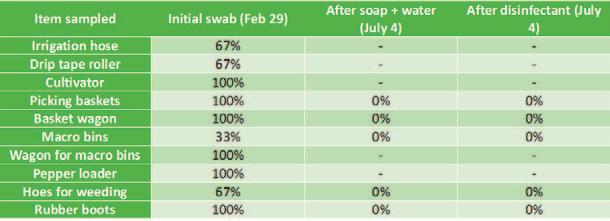
established that Colletotrichum spp. can survive for at least one year in soil/plant debris.
all equipment was washed -- results are shown for those that went through the cleaning steps which occurred on July 4. After washing with soap and water, all previously infected items were negative. These items were also put through the last step of cleaning with a sanitizer and were negative. This shows that even if you can’t sanitize, removing the debris with water and soap reduces your overwintering inoculum.
These results demonstrate that these diseases can start from using dirty
Nortera, Canada’s leading processor and marketer of canned and frozen vegetables, has announced a major five-year $28 million investment to optimize its Saint-Denis-surRichelieu plant in Québec. This project consolidates the company’s position as a central player in Canada’s agri-food sector and aligns with its strategy to maintain its competitive edge in an ever-evolving market.
The Saint-Denis-sur-Richelieu plant specializes in vegetable and legume canning, and the preparation of soups and sauces. With this project, Nortera will expand the plant’s capacity from 6 million to 10.6 million case equivalents. These investments will help ensure the continuity of local agricultural production in Québec in the years ahead.
“This major investment marks an important step for Nortera
and for Canada’s entire agri-food sector,” said Hugo Boisvert, CEO of Nortera. “We are committed to offering a sustainable future for our Canadian producers and growers while continuing to showcase their expertise and the quality of locally grown vegetables. The Saint-Denis-surRichelieu plant will become a key site in our Canadian industrial network, equipped with modern equipment and enhanced production capacity.”
Given the context of economic tensions, tariff uncertainties and growing competition from imports, ensuring food sovereignty is emerging as a top priority. Through this investment, Nortera is helping strengthen the sector’s competitiveness while generating essential economic benefits for the country’s agricultural and rural communities.
“This investment was both necessary and strategic to ensure the long-term competitiveness of our sector,” says Pascal Forest, chair of Producteurs de légumes de transformation du Québec (Processing Vegetable Growers of Québec). “By modernizing processing capacity here in Québec, Nortera is strengthening the entire value chain — from local growers to consumers — and helping secure a strong future for vegetable production and processing in Canada.”
As part of this modernization effort, Nortera’s Saint-Césaire plant is set to close by late January 2026. This transition will create 70 permanent jobs at the Saint-Denis-sur-Richelieu plant and the elimination of approximately 100 positions at Saint-Césaire.
Nortera is North America’s leader in frozen and canned
equipment in otherwise clean fields. Consider pathogen introduction pathways and do what you can to reduce the spread of dirt and plant debris. For more information about pepper anthracnose and many other pests, check out Ontario CropIPM.
Katie Goldenhar is pathologist — Horticulture. Amanda Tracey is vegetable crop specialist and Denise Beaton is crop protection specialist, Ontario Ministry of Agriculture, Food and Agribusiness.

vegetables. It operates 13 plants in Canada and the United States, processing and marketing more than 400,000 tonnes of vegetables each year in collaboration with approximately 540 agricultural partners. The company employs nearly 3,000 people across North America. Nortera produces for major private labels and retail brands while marketing its own brands, including Arctic Gardens and Del Monte in Canada.
Source: Nortera October 15, 2025 news release

Canada’s agriculture industry is one of the country’s greatest economic drivers, but it is constrained by outdated and inefficient regulatory processes. At a time when global demand for safe, sustainable food is rising, Canada risks losing ground to competitors and missing opportunities to strengthen food security at home.
This is why at CropLife Canada we are pleased to see the Government of Canada moving forward with its red tape review exercise. Its efforts to ‘streamline services, cut duplication, and reduce costs for Canadians and businesses’ are a step in the right direction towards driving productivity gains for agriculture and the plant science sector.
Agriculture already contributes almost $150 billion annually to Canada’s GDP, however, if Canada is to become the strongest economy in the G7 as the current government aspires, it will need the agriculture and food sector to flourish and grow.
We desperately need a fundamental shift in how Canada approaches regulation. Health and environmental protection will always be of the utmost importance, but collectively we must find the balance between regulating for risk and regulating for growth. Canada has long neglected this balance, which is highlighted in its dismal ranking of 32 out of 38 member countries for administrative and regulatory burden as tracked by the Organization for Economic Co-operation and Development.
However, while the red tape review progress reports from Health Canada, the Canadian Food Inspection Agency (CFIA)
and the Pest Management Regulatory Agency (PMRA) include recommendations related to plant science innovations that are a step in the right direction, Canada urgently needs bolder and faster action from government. The current measures are simply not enough to pull us out of our productivity slump. Much of the current opportunity for regulatory reform lies in low hanging fruit such as no-cost measures to improve the efficiency of the regulatory system and ensure farmers have timely access to innovative new seed and crop protection tools.
When it comes to the PMRA, the challenges are particularly acute. Back in 2021, the PMRA launched its ‘Transformation Agenda’, resulting in tens of millions of dollars spent, a rapidly increasing administrative headcount, and a decline in performance. These efforts have not resulted in any improvements when it comes to the protection of human health and safety and have only added unnecessary regulatory burden to the system.
The results of excessive red tape are clear: annually, new product submissions to the PMRA are half of what they were a decade ago, and the timelines for approval have nearly doubled. This significantly diminishes Canada’s reputation as a global regulatory leader and disadvantages Canadian farmers.
Canadian fruit and vegetable growers in particular need timely access to new innovations to stay competitive. Yet in Canada, new product innovations are slow to come to market while farmers are losing access to some existing products. Fruit and vegetable growers rely on timely access to the crop protection products they need to protect their crops from insects, weeds and disease. Without these tools the quality, value and yield of crops would fall, reducing the availability of home-grown products and increasing reliance for Canadians on imported produce. Simply put, many fruits and vegetable crops would potentially not be viable without crop protection tools.
Canada is a small market for pesticides globally. If we are going to attract investment in new crop protection tools, especially for smaller acreage

The results of excessive red tape are clear: annually, new product submissions to the PMRA are half of what they were a decade ago, and the timelines for approval have nearly doubled.
crops, it’s imperative that our regulatory system be predictable and timely and not mired in red tape. Think about the opportunity lost if it takes over a decade for a grower to get a new crop protection product that can save an orchard from devastation from a new insect pest or a strawberry from destruction from disease. If companies can’t count on a fair and efficient regulatory process, we risk losing sources of innovation and jobs in Canada. That’s not just lost income for farmers, it’s a hit to Canada’s economy, lower food security and higher grocery bills for consumers.
Regulatory inefficiency affects the entire food system, from innovation to consumer affordability and sustainability. The good news is that our members are already investing in and driving cutting-edge research and development, supporting Canadian manufacturing, and providing agronomic expertise
that helps farmers use products responsibly and effectively. These investments depend on a regulatory environment that enables innovation rather than discourages it, protecting human and environmental health while serving as a catalyst for growth. Regulatory agencies play a critical role in safeguarding people and the environment, but they also influence Canada’s economic competitiveness, and right now slow approvals and excessive red tape are holding agriculture back.
Without bold, immediate action, Canada’s agriculture industry will remain limited by inefficient regulatory processes. Now is the time for the government to aggressively pursue reforming the PMRA’s mandate and restoring its performance standards to enable timely access to innovation. The plant science industry is ready to work alongside the government and regulators to ensure Canada’s
regulatory system can keep pace with new submissions and re-evaluations, so Canada’s farmers have the tools they need to compete and win on the global stage.
Canada.

The Gowan Company has completed the acquisition of Ceradis, integrating the Netherlands-based innovator into the Gowan Group. This alliance combines Gowan’s global strength in crop protection and seeds with Ceradis’ expertise in the formulation, development and registration of crop protection compounds, expanding innovative solutions for growers worldwide.
• Strengthens Gowan’s global presence in Europe and the Americas.
• Expands the portfolio of
research, development and innovative formulations.
• Reinforces the commitment to growers by providing greater technical support and tailored solutions.
“This acquisition strengthens Gowan’s long-term strategy of building a diversified, sustainable crop protection portfolio,” said Rob Plaice, global head of R&D.”
eradis’s unique biocontrol solutions and forward-thinking formulation technology align well with Gowan and our future. Their bio mineral technologies
expand our ability to deliver integrated disease management programs that combine conventional chemistry with natural mineral solutions. These multi-site mode-of-action products help preserve the effectiveness of key active ingredients, align with global sustainability trends and ensure growers have durable solutions for the future.”
“Joining Gowan marks the beginning of an exciting new chapter for Ceradis,” said Willem-Jan Meulemeesters, CEO of Ceradis. “Gowan shares our

deep commitment to innovation, sustainability and providing growers with practical, sciencedriven solutions. Together, we will expand the reach of our biocontrol offerings, accelerating the adoption of more sustainable disease management strategies worldwide.”
Ceradis will continue
operating from its headquarters in Wageningen, Netherlands, while integrating into Gowan’s global network.
Source: Gowan Company October 2, 2025 news release
Syngenta Canada is introducing Envita Dry, an innovative nitrogen-fixing biological product helping farmers give their crops access to the nitrogen they need to boost their yields – all in a convenient dry formulation.
Envita Dry features the bacteria Gluconacetobacter diazotrophicus (Gd) – a naturally occurring food-grade bacteria that enables nitrogen fixation in a wide variety of crops, including potatoes. The dry formulation offers a two-year shelf life and an ultra-low use rate thanks to a high concentration of Gd.
“Envita Dry gives plants the ability to source additional nitrogen from the atmosphere and deliver it to the right place and at the right time when the plant needs
it,” says Gustavo G Roelants, biologicals marketing lead for Syngenta Canada.
“Soil-available nitrogen doesn’t necessarily equal plant-accessible nitrogen, and that’s where Envita Dry can add value by enabling nitrogen fixation to the crop for an additional supply of this essential nutrient. The product supports the nutrient use efficiency of the crop by fixing nitrogen inside cells throughout the plant’s leaves for a season-long nutrient supply.”
Roelants recommends growers leverage Envita Dry to supplement existing fertilizer programs. Envita Dry is easy to store, transport, and use with a broad application window. Envita Dry goes easily into suspension and no pre-mixing is required when added to tank water.
Each 200-gram pouch treats 40 acres, making it easy to scale up to match the size of field being treated.
“Envita Dry has been tested in Canada for Canadian farmers, offering them the opportunity to realize a yield advantage across a wide variety of crops,” says Roelants, noting the product’s effectiveness at improving yield in a variety of crops. Envita Dry is registered for use in potatoes, canola, cereals, corn, pulses, soybeans and forage crops, and comes with a Performance Guarantee from the manufacturer*.
Envita Dry is best applied solo with a non-ionic surfactant and can be added to an existing pass with compatible products at fungicide and herbicide timing. Envita
Global agriculture technology leader Corteva plans to separate the company into two independent, publicly traded companies, one comprising its current Crop Protection business (“New Corteva”) and the other comprising its current Seed business (“SpinCo”). If approved by regulators, the transaction may close in the second half of 2026.
Upon separation, current Corteva chair Greg Page will become chair of New Corteva; current Corteva CEO Chuck Magro will become CEO of SpinCo.
“The seed and crop protection markets have evolved, and as a result, we see the opportunities ahead for both companies diverging,” says Corteva CEO Chuck Magro. “This is the right time to act to stay ahead of the market. This separation will allow both businesses to maximize long-term value creation by focusing on their own priorities. As such, we see this separation as the logical next step in their growth trajectory.”
Over the past few years, with its focus on efficiency and differentiation, the business that will become New Corteva has
been a strong performer in an industry experiencing intensifying competition. Today, while the industry is well suppliednot only in production and capacity, but also with market participants - the market continues to value effective, differentiated technology, and this focus will help the company continue to stand apart from its peers.
New Corteva will nonetheless operate in an industry that will need to compete differently in the future. As such, it will continue its progress towards an optimized supply chain and have a laser focus on maximizing shareholder returns, operational excellence and the next generation of sustainable, differentiated innovation - including biologicals, the industry’s fastest growing market segment.
As a scaled, standalone company, New Corteva’s capital structure and targeted investment-grade credit rating will be tailored for a business model designed to support future capital needs and deliver consistent growth over time. Capital will be directed towards organic investment in differentiated solutions, innovation to bring



advanced sustainable solutions to farmers, and disciplined M&A to expand market positions in attractive portfolios or geographies.
New Corteva’s partners will benefit from its focused, more optimized route to market. In addition, the company will be able to drive more effective channel management. New Corteva will also benefit from enhanced strategic flexibility, collaboration and partnership across the industry to drive efficiency and value.
Through a focus on returns, targeted investment and operational excellence, New Corteva will help farmers solve some of their toughest challenges and continue to lead the industry in crop protection. 2025 net sales attributable to New Corteva are estimated to total $7.8 billion, representing 44 per cent of net sales for Corteva.
SpinCo will deploy advanced genetics to discover and develop groundbreaking solutions that help farmers around the world improve yield, enhance sustainability and strengthen crop health. As home to the Pioneer brand, it will launch from a



Dry should only be mixed with a tested product that has been shown to be compatible. Some tank-mix partners may have an adverse effect on Gd, the active ingredient in Envita Dry. Refer to the Syngenta Canada website for a full list of tested products: www.syngenta.ca/ productsdetail/envita-dry#tank-mix.
*Conditions apply – subject to program terms and conditions. See program terms and conditions at https://azotic-na.com/performanceguarantee-canada
Source: Syngenta September 29, 2025 news release
position of strength: Pioneer’s century-long track record of advanced breeding, market leadership and financial strength is unmatched in the industry. SpinCo, a classic growth compounder, will also leverage other opportunities, including the strength of its regional anchor brands, including Dairyland Seed; its partnership with retailers through brands like Brevant; and growing presence in the out-licensing market.
As a scaled standalone company, SpinCo will target an investment-grade rating, with capital allocation priorities tailored to its growth model. This will include targeted M&A, sustained investment in R&D and the fulfillment of existing opportunities: out-licensing, hybrid wheat, biofuels and gene editing. 2025 net sales attributable to SpinCo are estimated to total $9.9 billion, representing 56 per cent of net sales for Corteva.
Source: Corteva October 1, 2025 news release






advertising@thegrower.org 866-898-8488 x 221








